fall inside a hole
R-03 Curve Rail
| <--- R-02 Half Straight Rail |
R-04 Large Curve
Rail --> R-04 Double Track Straight Rail --> |
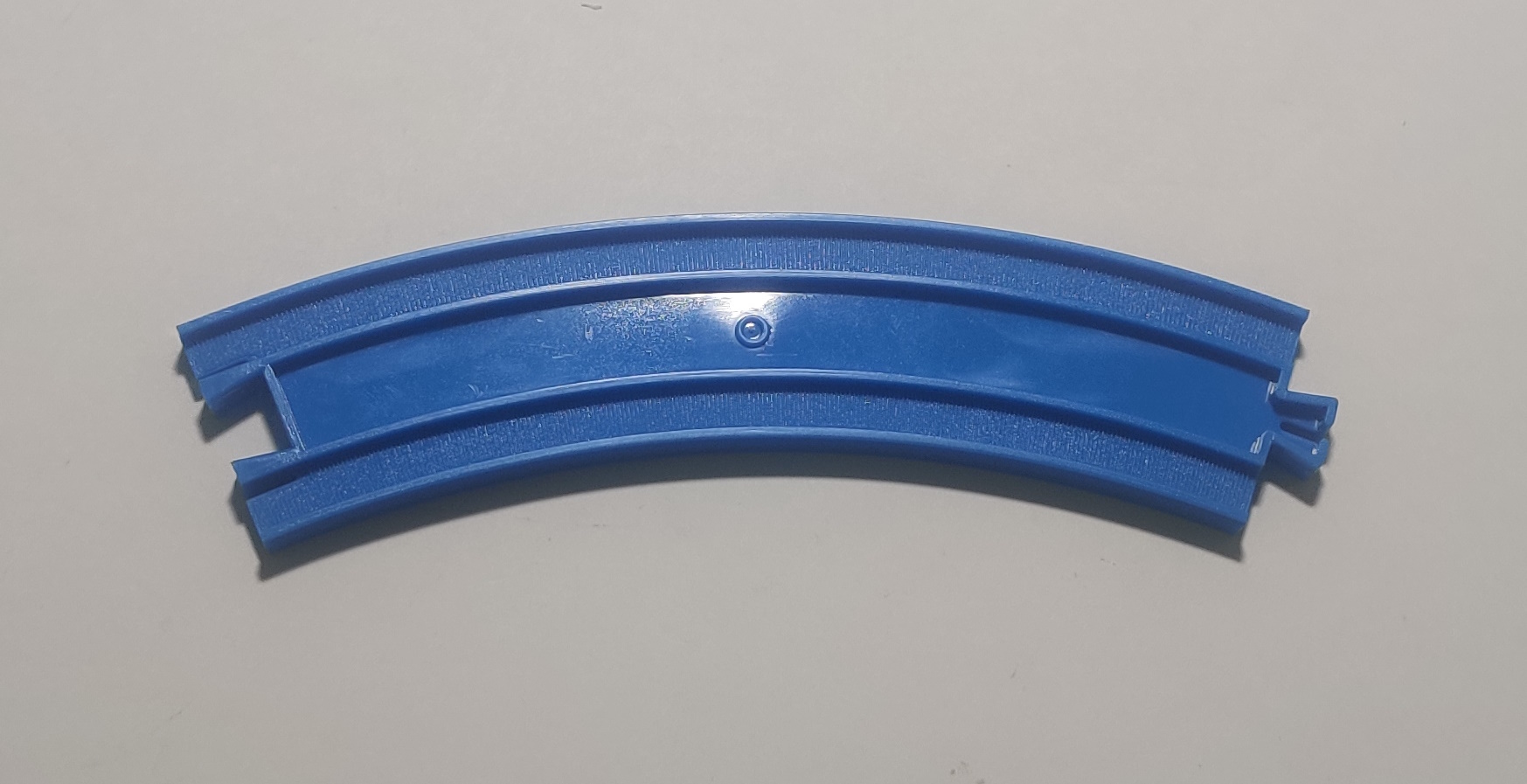
The curve rail (きょくせんレール or 曲線レール) is one of the cornerstone pieces of Plarail and its track system. They were given the designation 2 under the 1970s numbering scheme and R-03 under the 1987 numbering scheme. As part of a sensible rail system, the radius of the standard Plarail curves is approximately equal to the length of one normal straight rail, allowing for the two to be effectively intermixed in a variety of ways. The official radius of a curve rail (as well as the length of standard straight rails) is 216mm, but some Plarailers use 214mm instead. With age many types of rail seem to shrink and measure within a range of lengths. The play in the track joints and plastic itself will generally account for any issues that the exact length of any particular rail may pose.
Smooth rails (1958/9-1974)
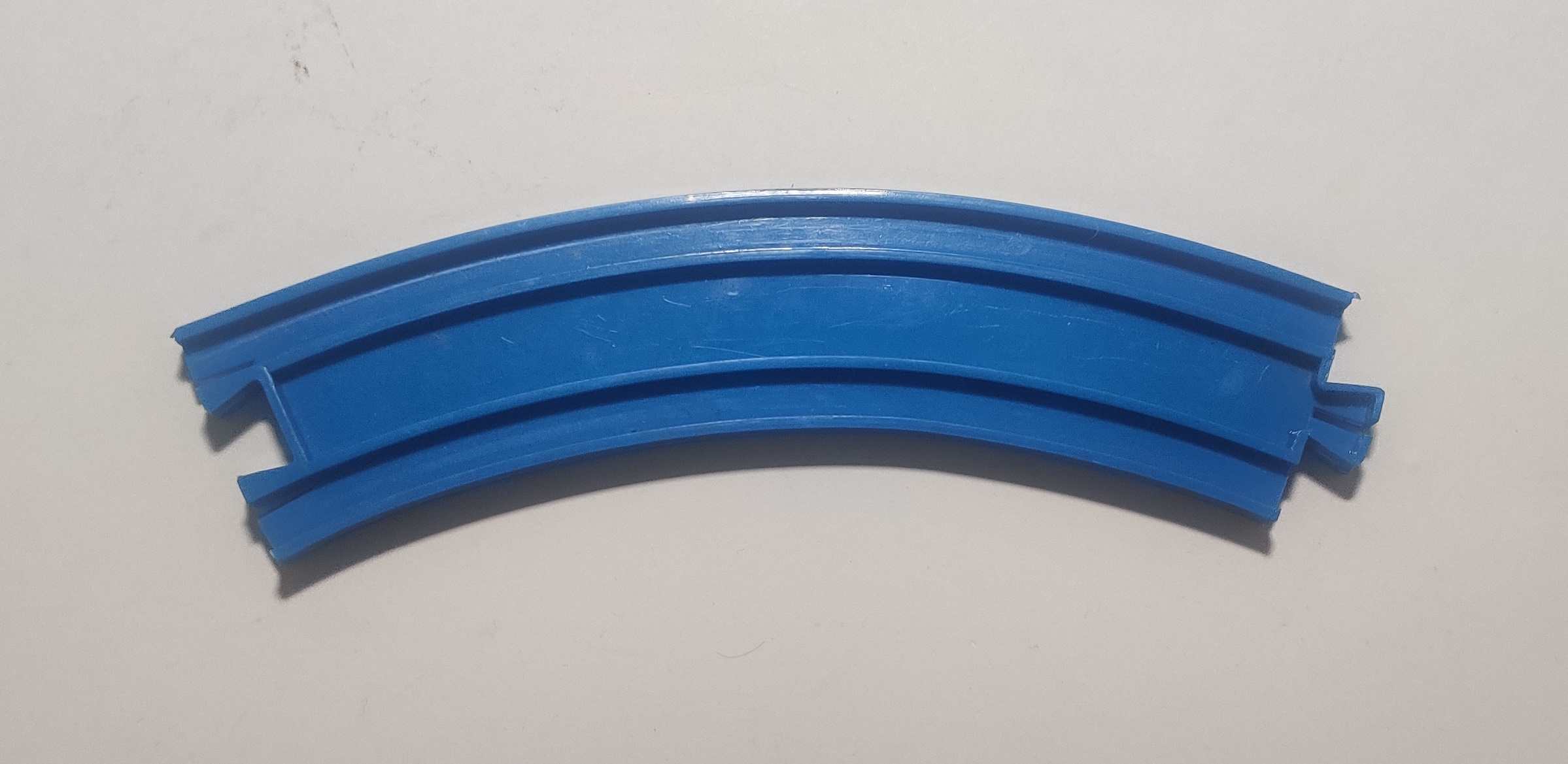
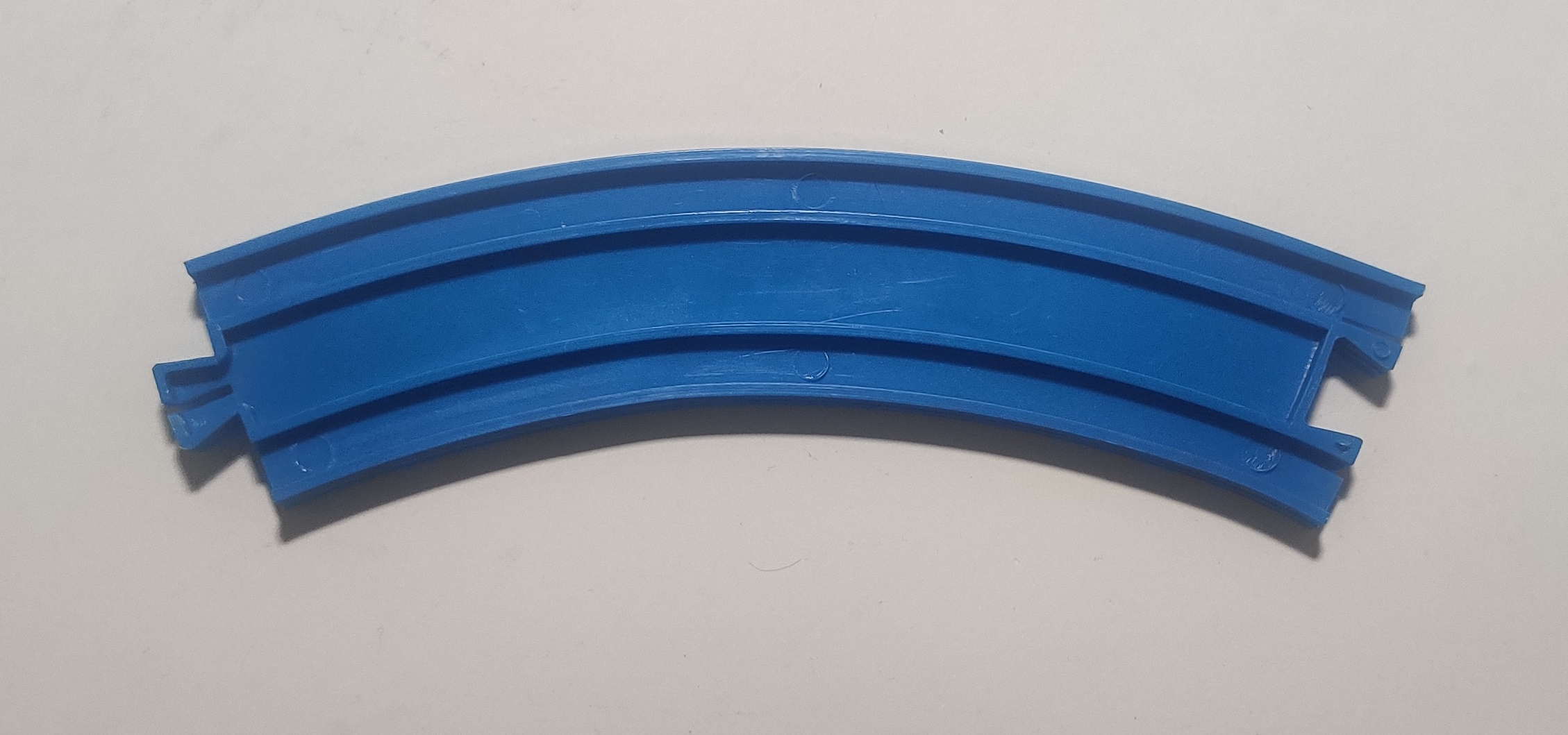
The earliest design of curve rail dates back to the very beginning of Plastic Rail and is completely smooth with no tread or roughness to the rails and no country of manufacture markings. There are six circular molding marks on the "bottom" of these rails which are a result of where metal pins in the tooling extend to push the rails out of the molding slots. These rails were in use throughout the 1960s. The plastic mix is harder (or has hardened over time) and most examples seem to have shrunk or expanded unevenly over time. Rails do not always fit together well or evenly.
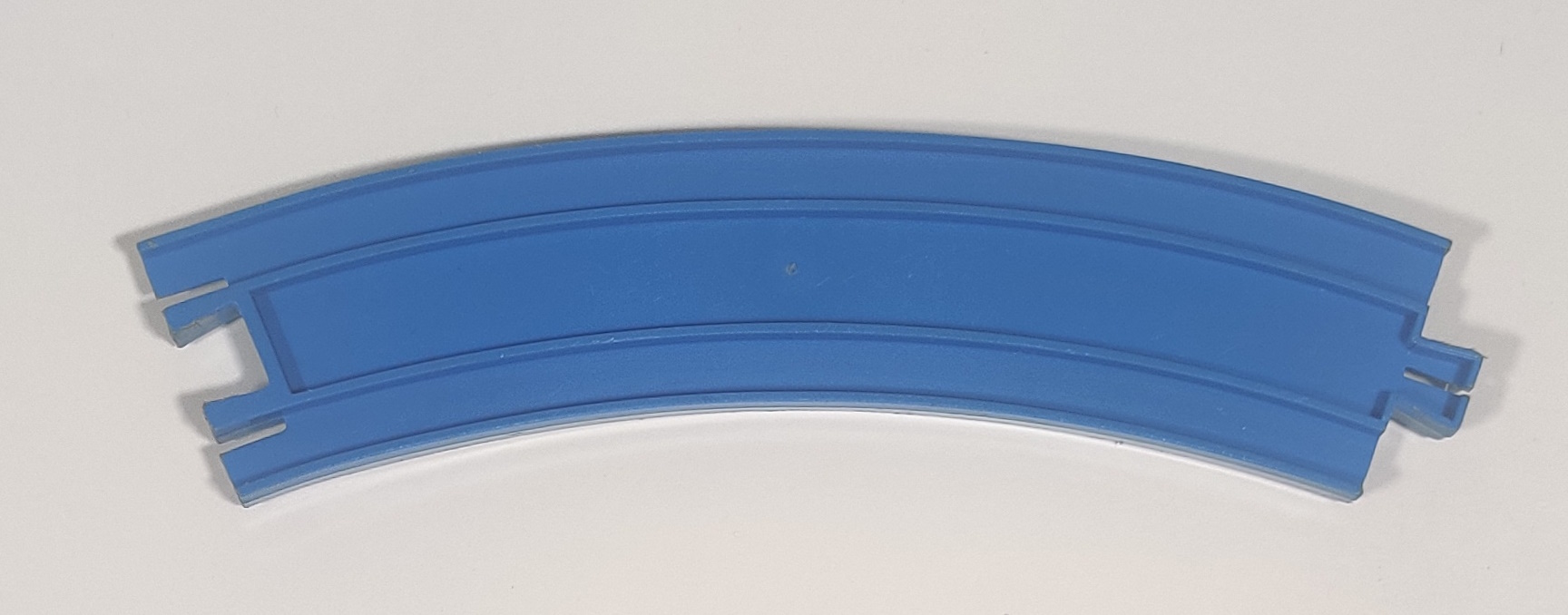
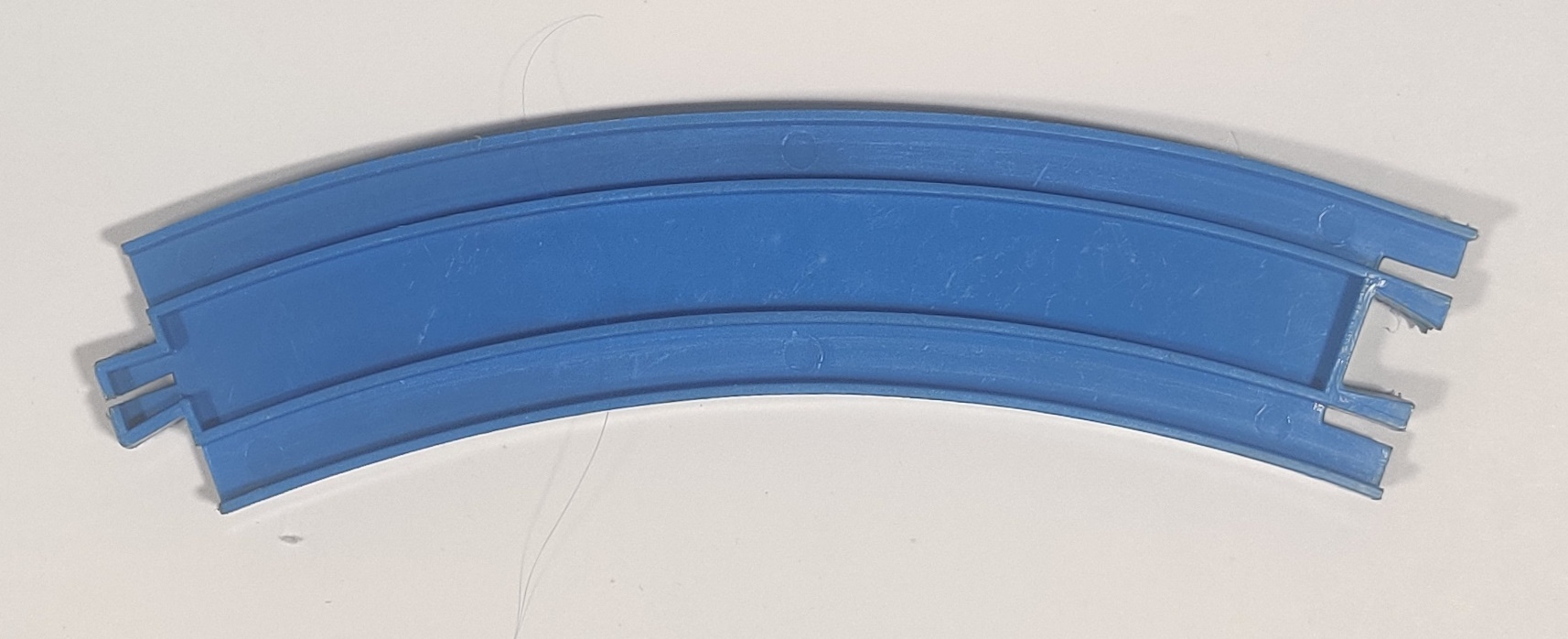
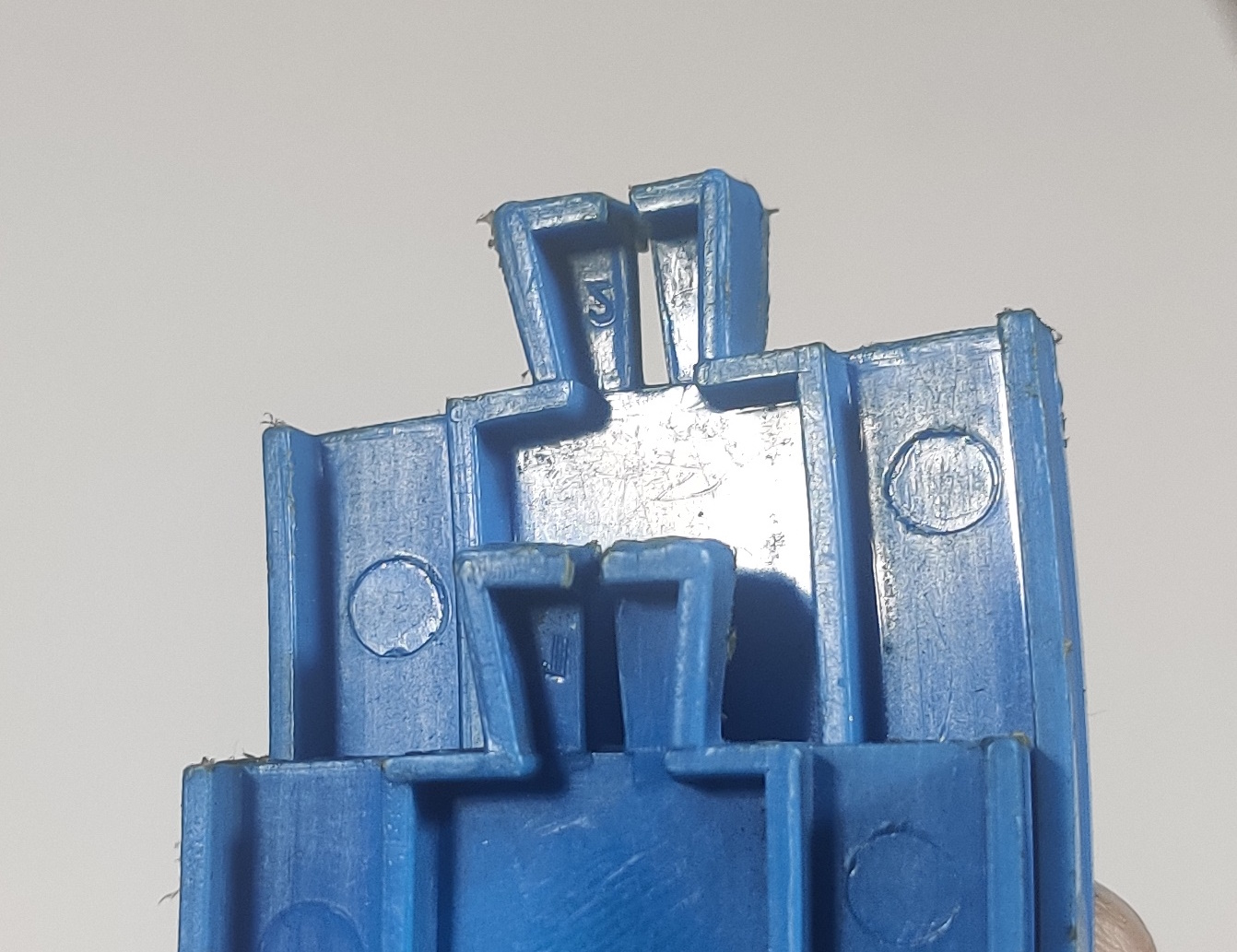
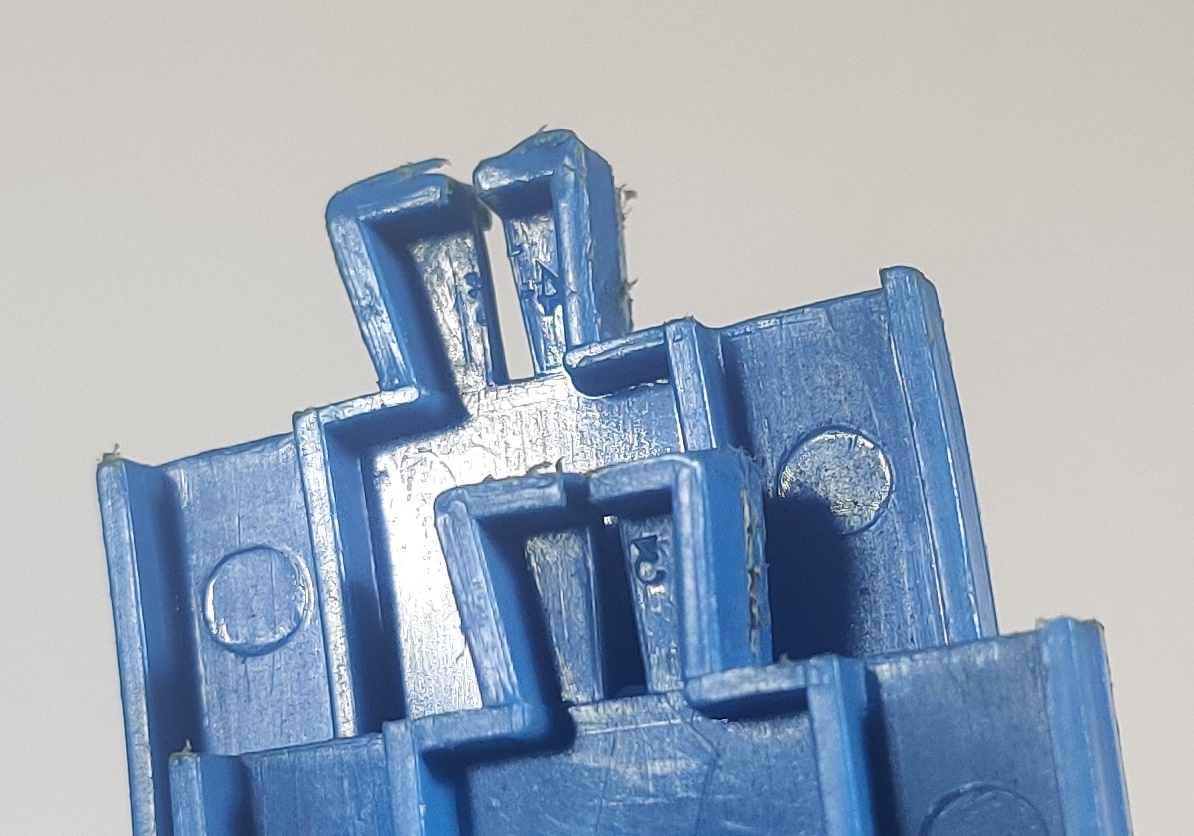
One later variation of the smooth curve rail has small mirrored numbers marked in the outboard connector. The marks appear mirrored in the rail but would have looked correct on the mold itself. The different numbers allow rails that fail quality control to be traced back to a specific "slot" in a larger mold that can make multiple rails at one time. Many Plarail pieces contain molding marks like these. The "top" of these rails has a pip from the molding process.
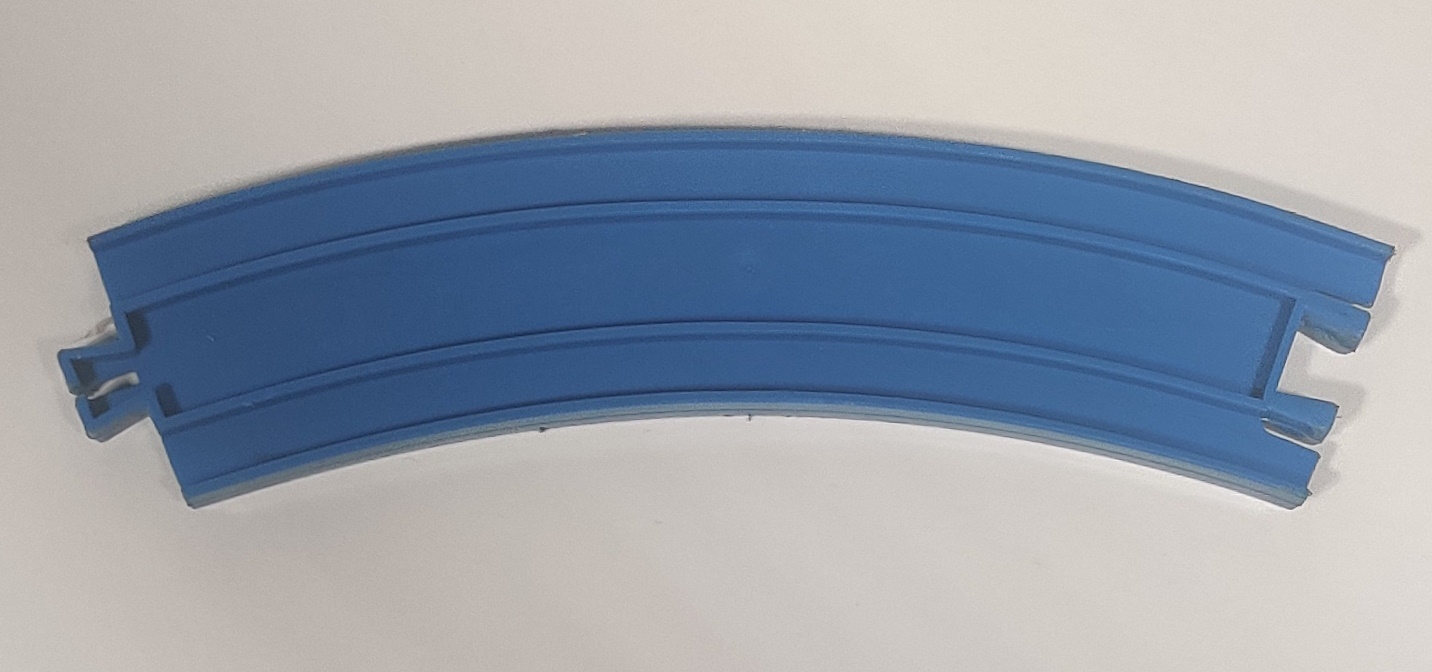
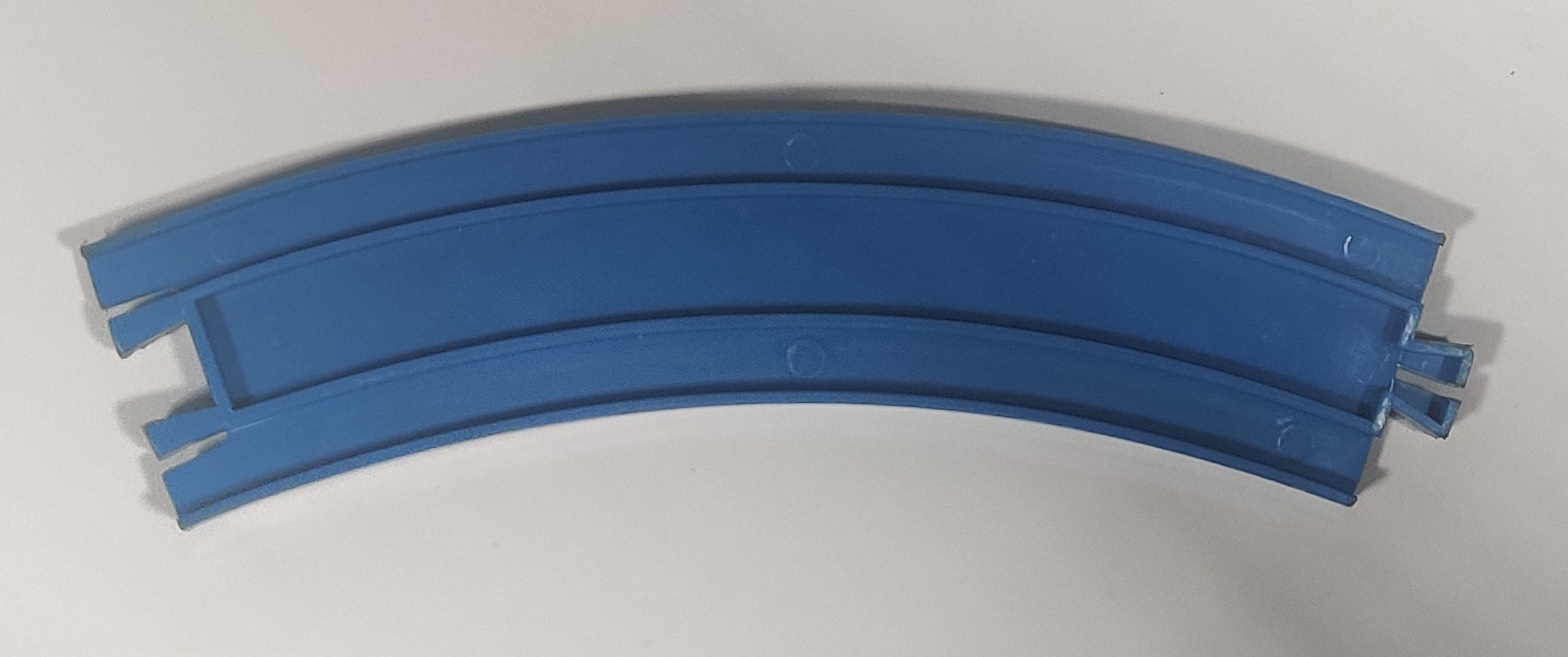
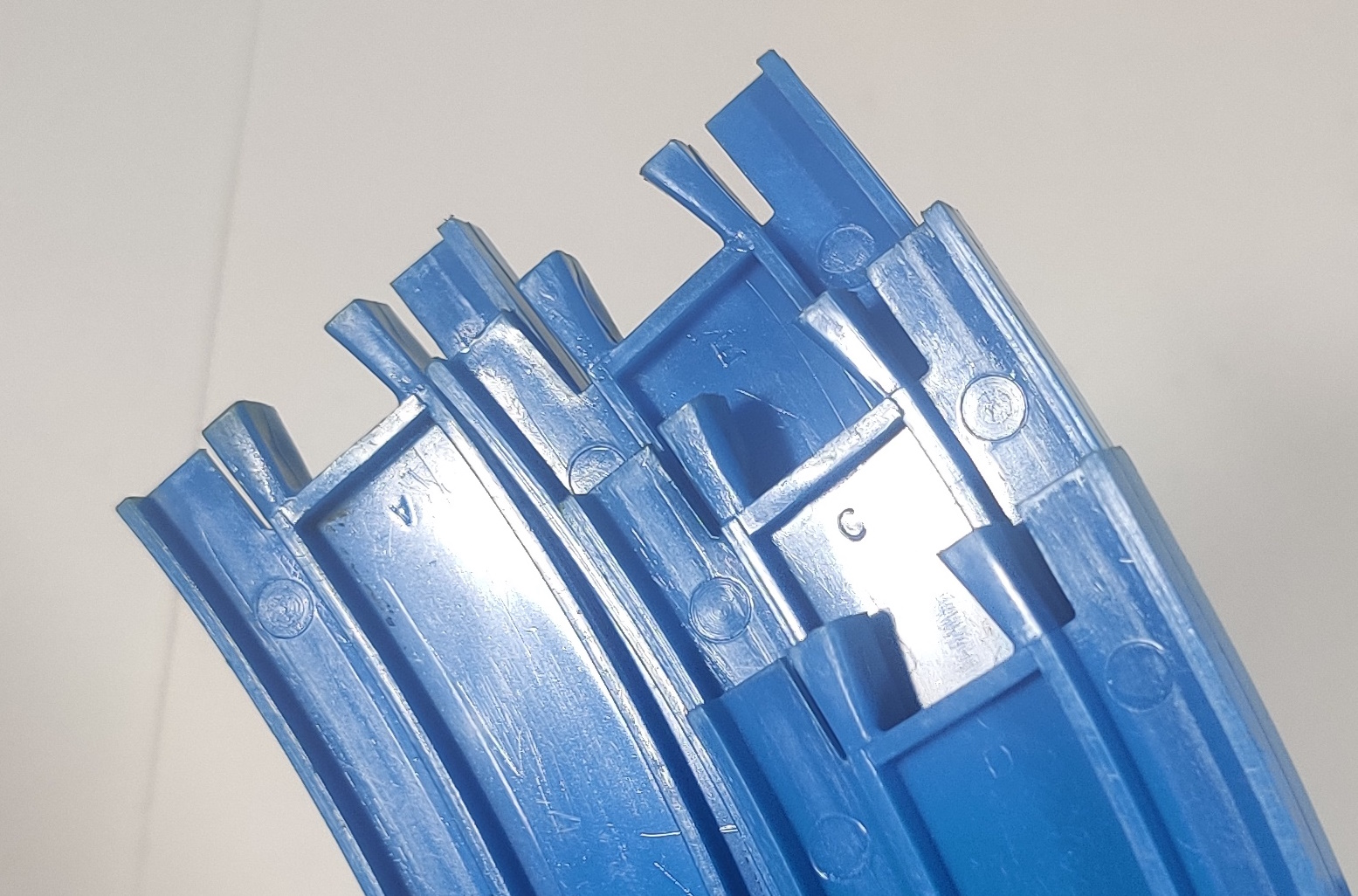
Another smooth curve rail variant has a single pip in the top of the rail and six circular marks along the rails on the bottom of the rail. These rails are marked with letters on the bottom near the input connector and are "upside down" compared to most other moldings.
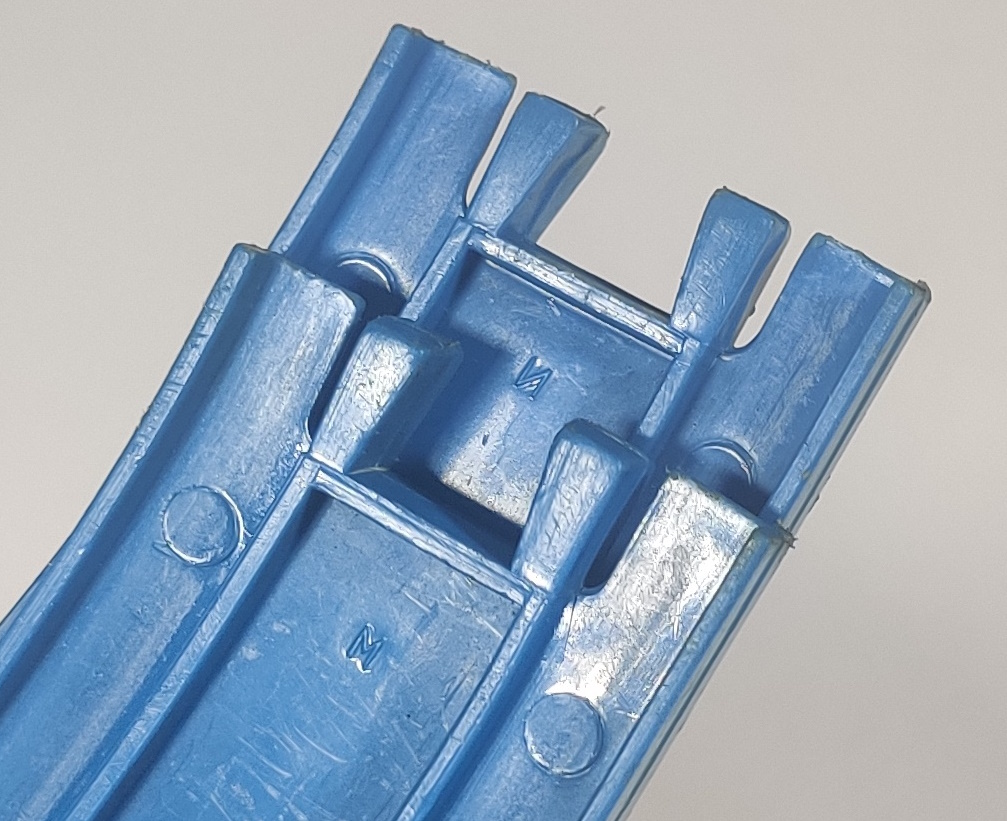
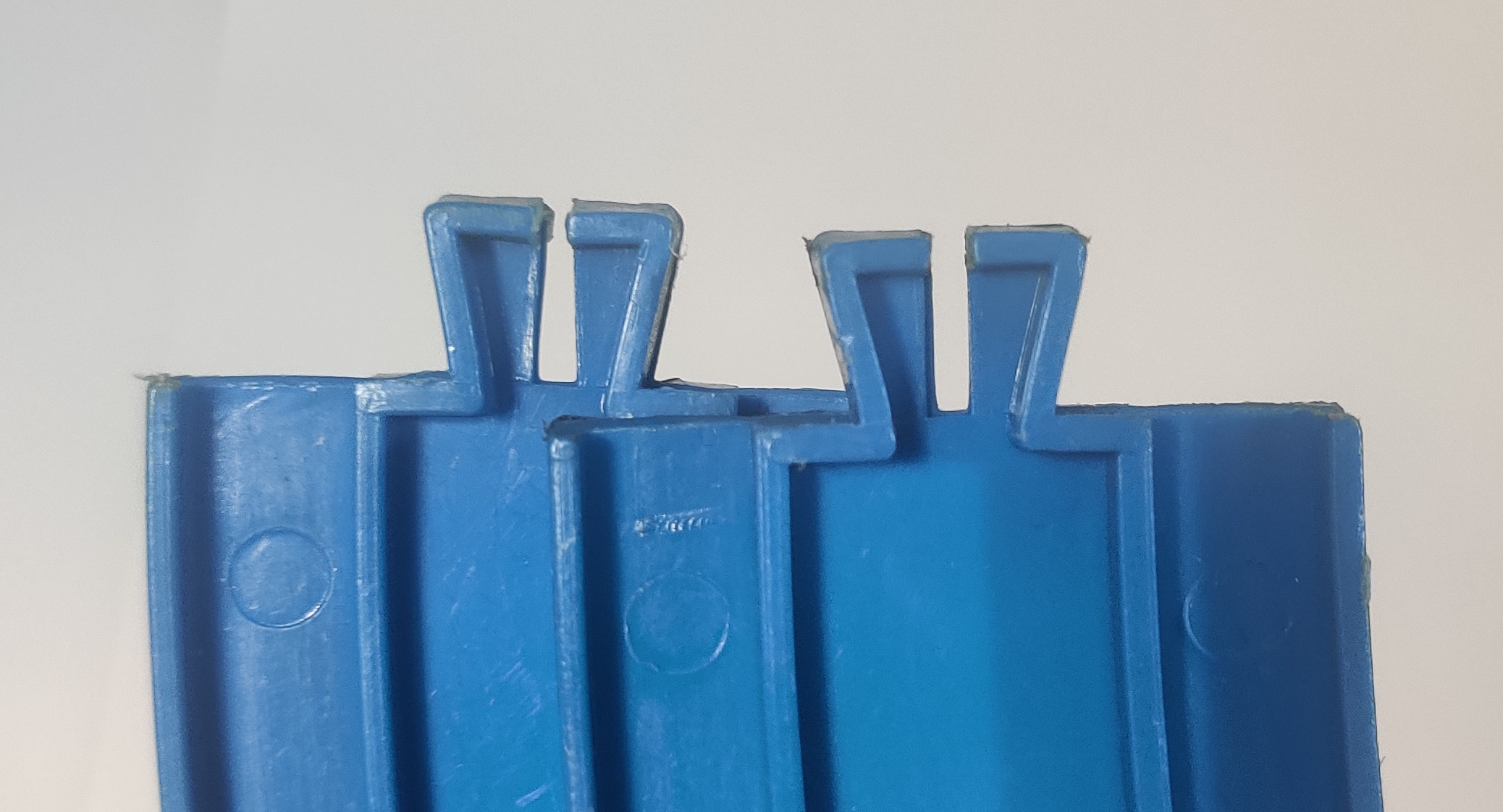
There are also M and N variants of these rails. The N output connectors seem to be rougher than the other molds.
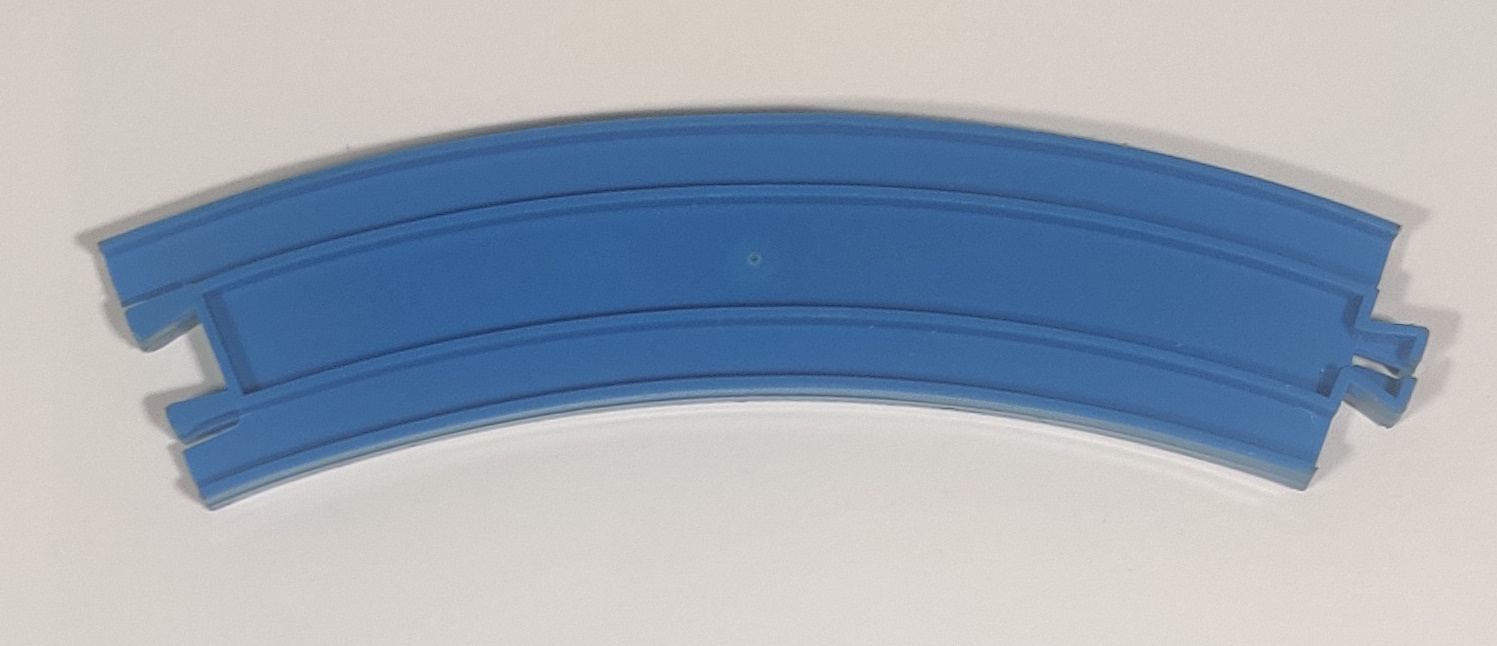
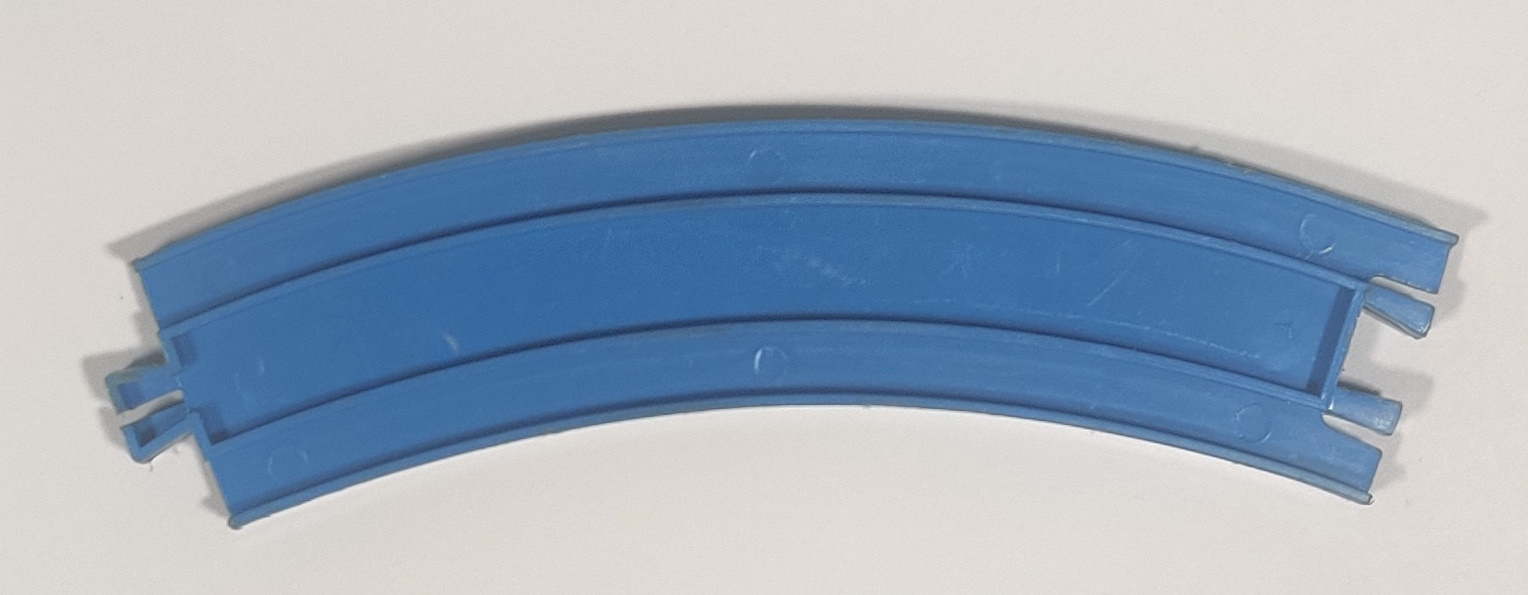
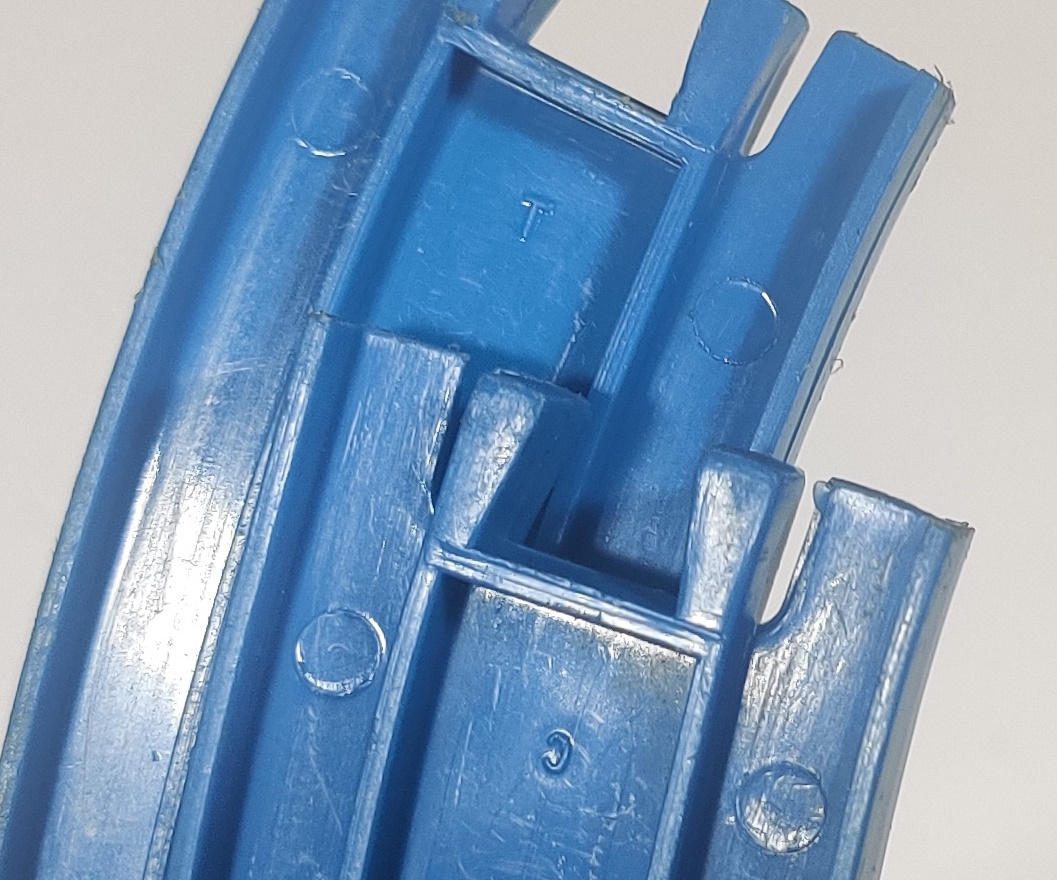
A similar molding variant is this rail that is molded in the "normal" direction. I have only seen C and T moldings of this version.
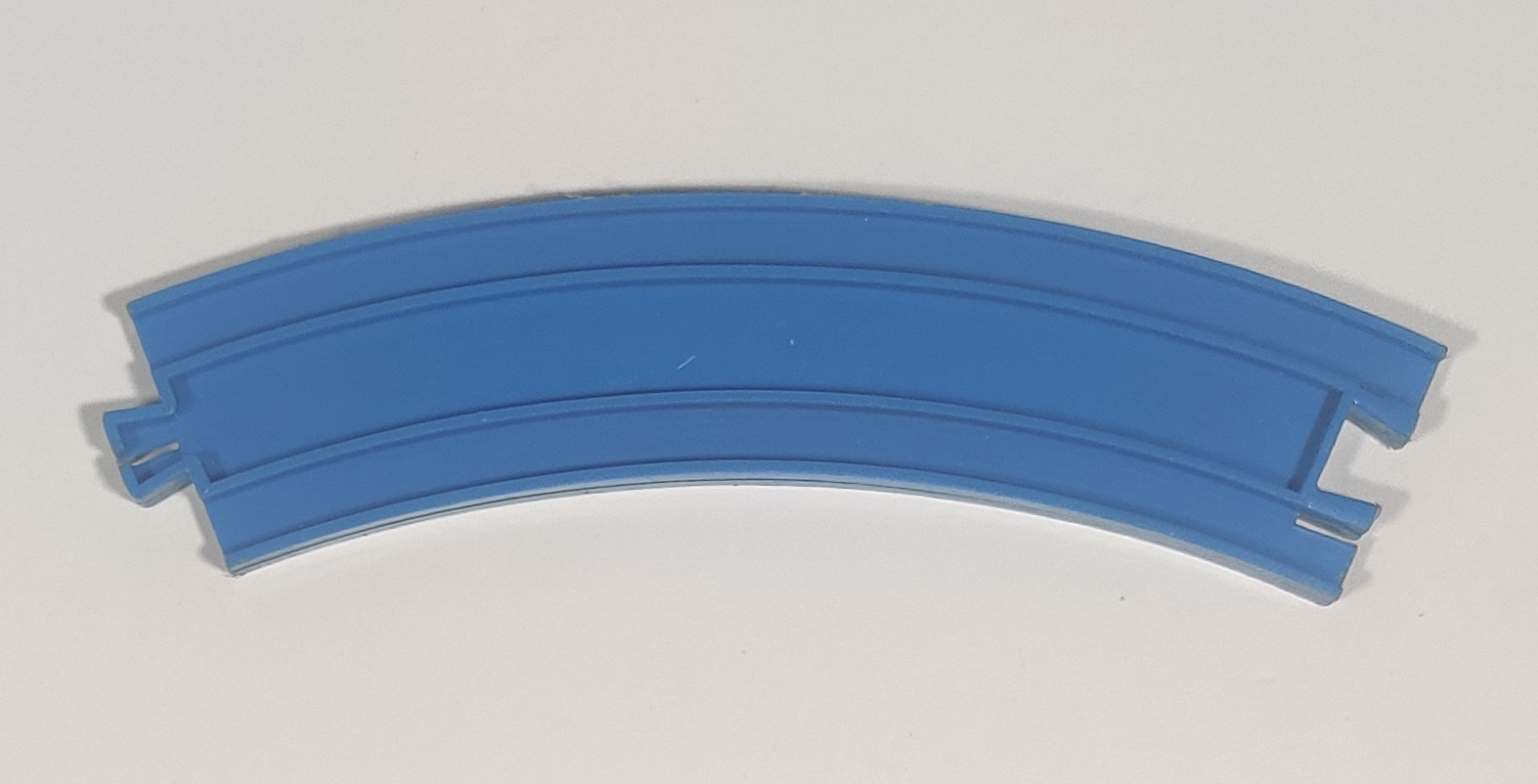
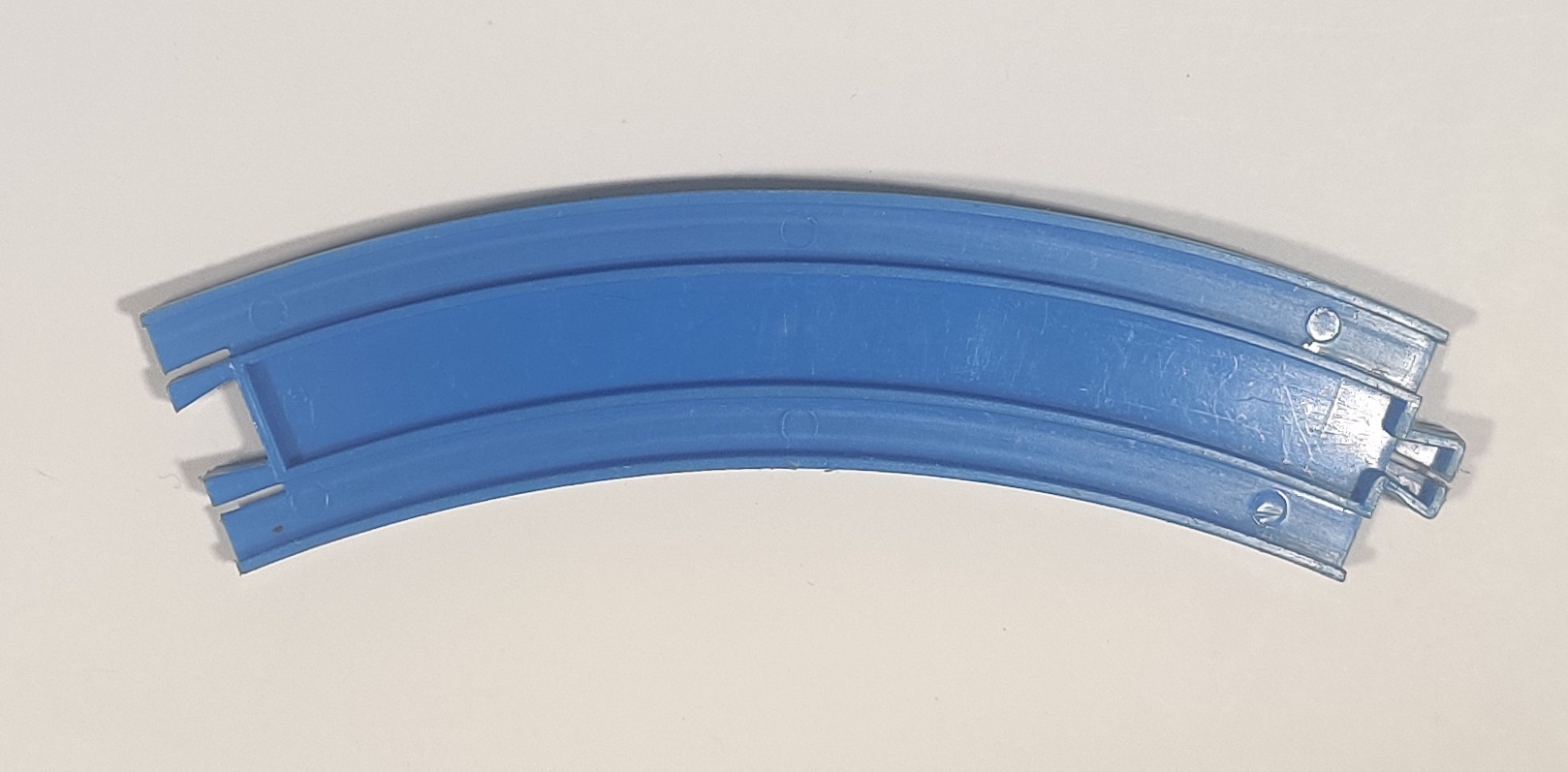
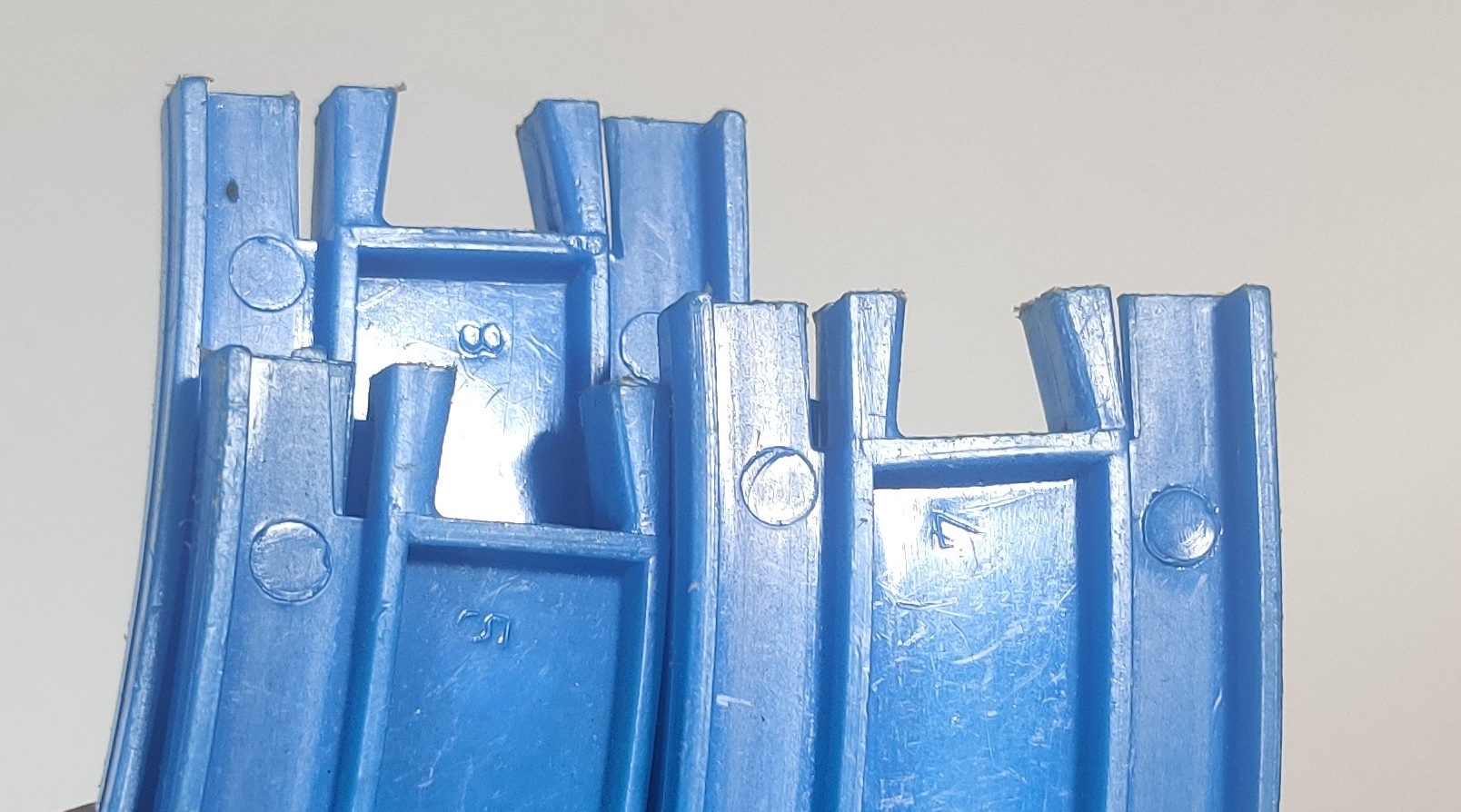
Another smooth curve rail variant has somewhat uneven numbers near the input connector. It is hard to know the exact order some of these rails appeared in without finding boxed sets that have not had their rails mixed up over 50 years. I suspect that larger molds that would make four or so rails at a time could make some rails in the "normal" orientation and others "upside down." It seems that this set of molds may have been sent to Hong Kong and used to produce rails for the Palitoy Discovery Time exports in the later 1970s.



Another smooth variant has mirrored molding numbers near the outboard connector. These rails have three small marks in the molding near the input connector. I have seen these curved rails with both 1 and 2 in them.
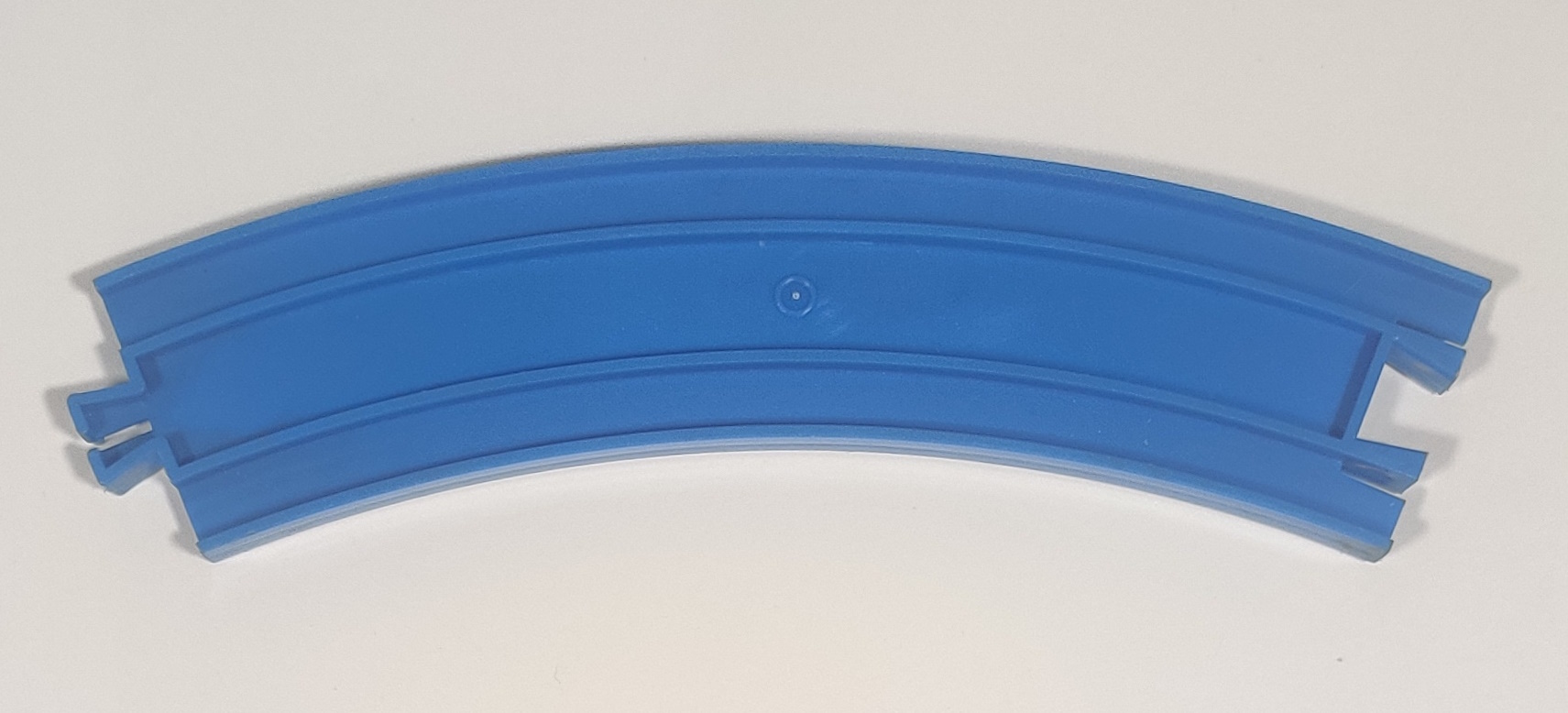
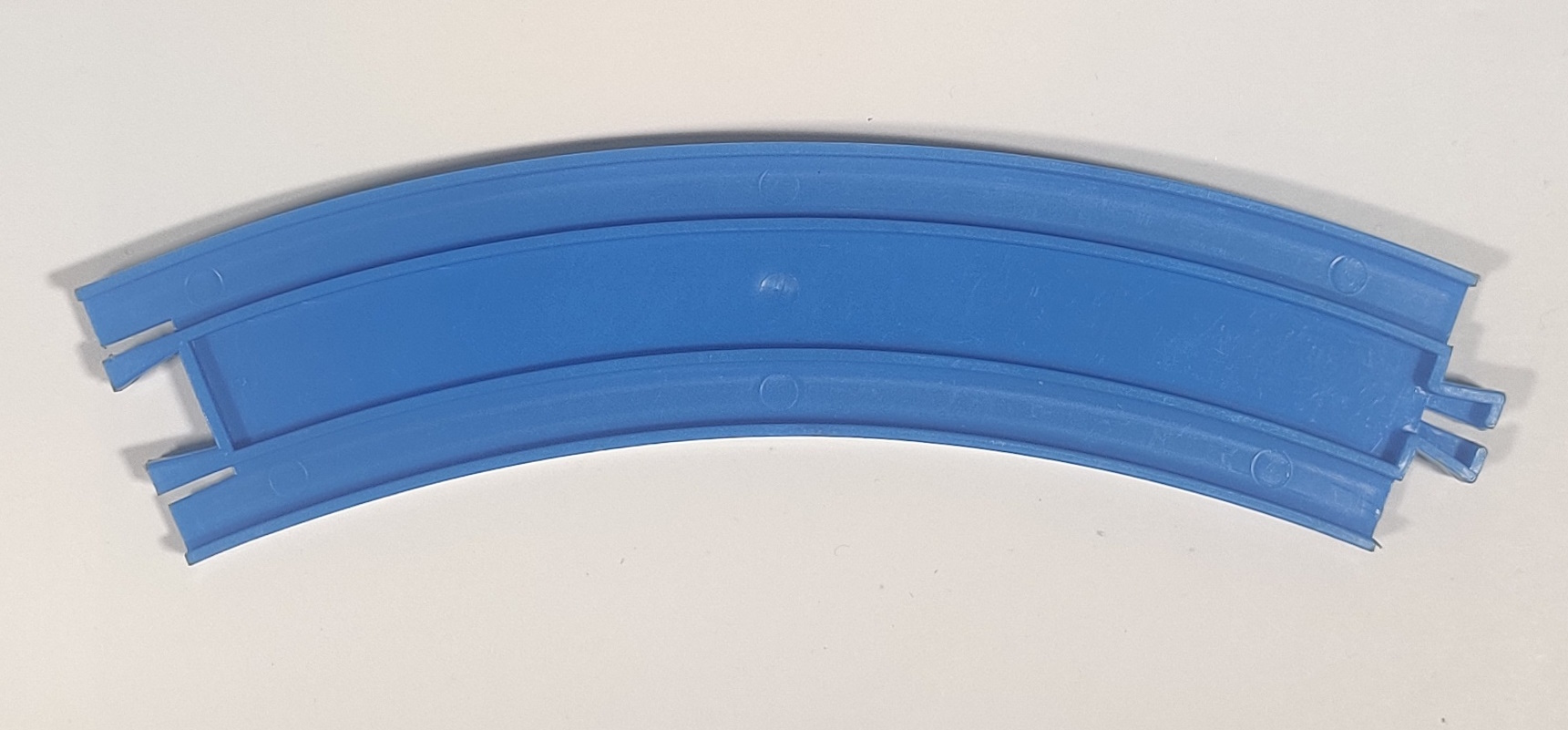
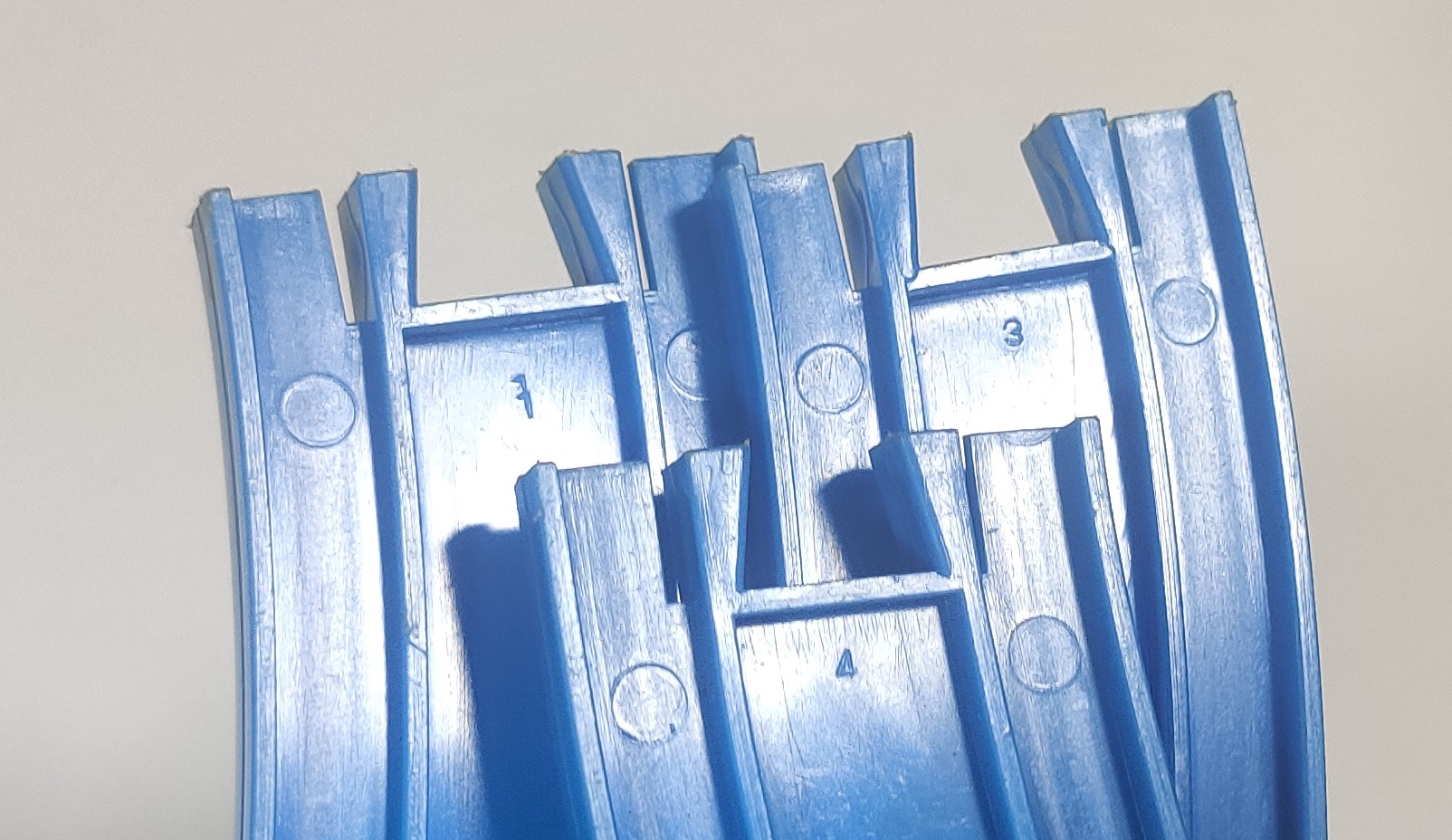
This late smooth-era design used a small plastic ring around the central molding pip, a design that would be seen on various rails for decades after. These rails have smaller (and lower) numbered marks near their inboard connectors.
Roughtop rails (1974-1987)
Around 1974 rails transitioned to "roughtop" rails to increase the traction of locomotives.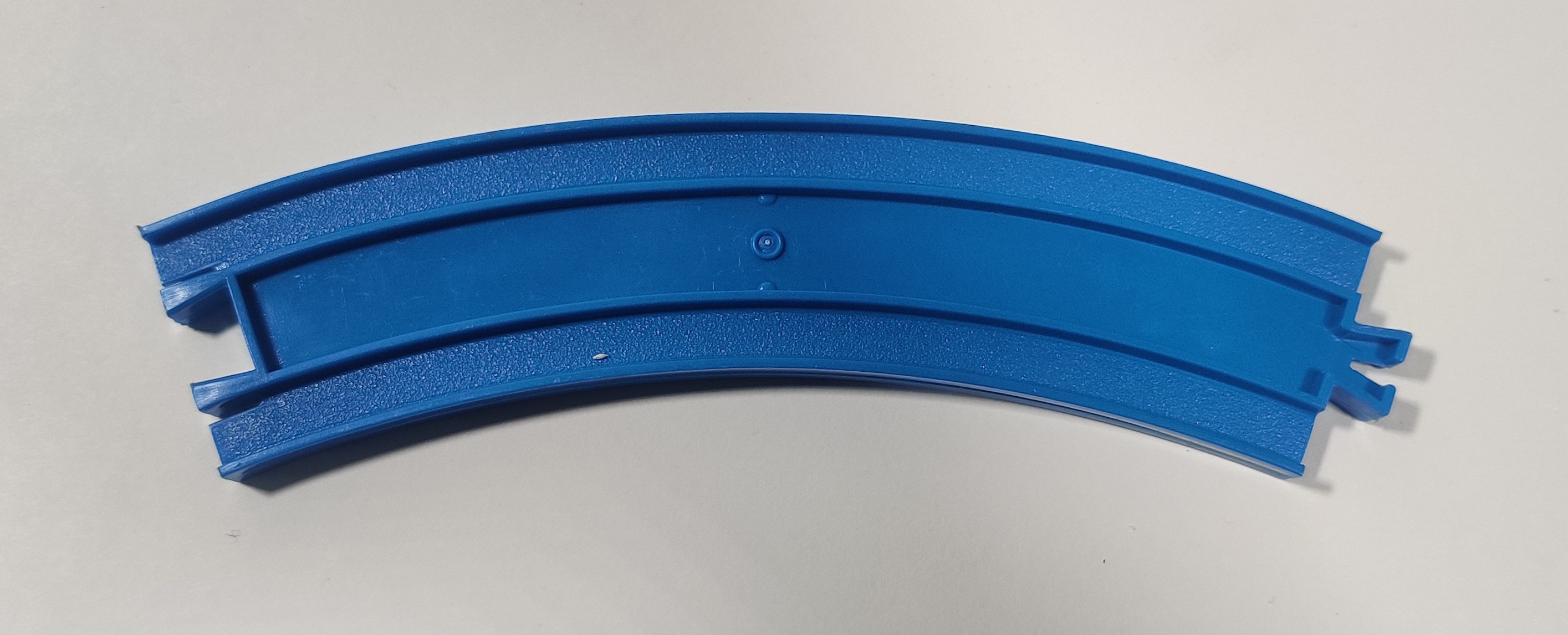
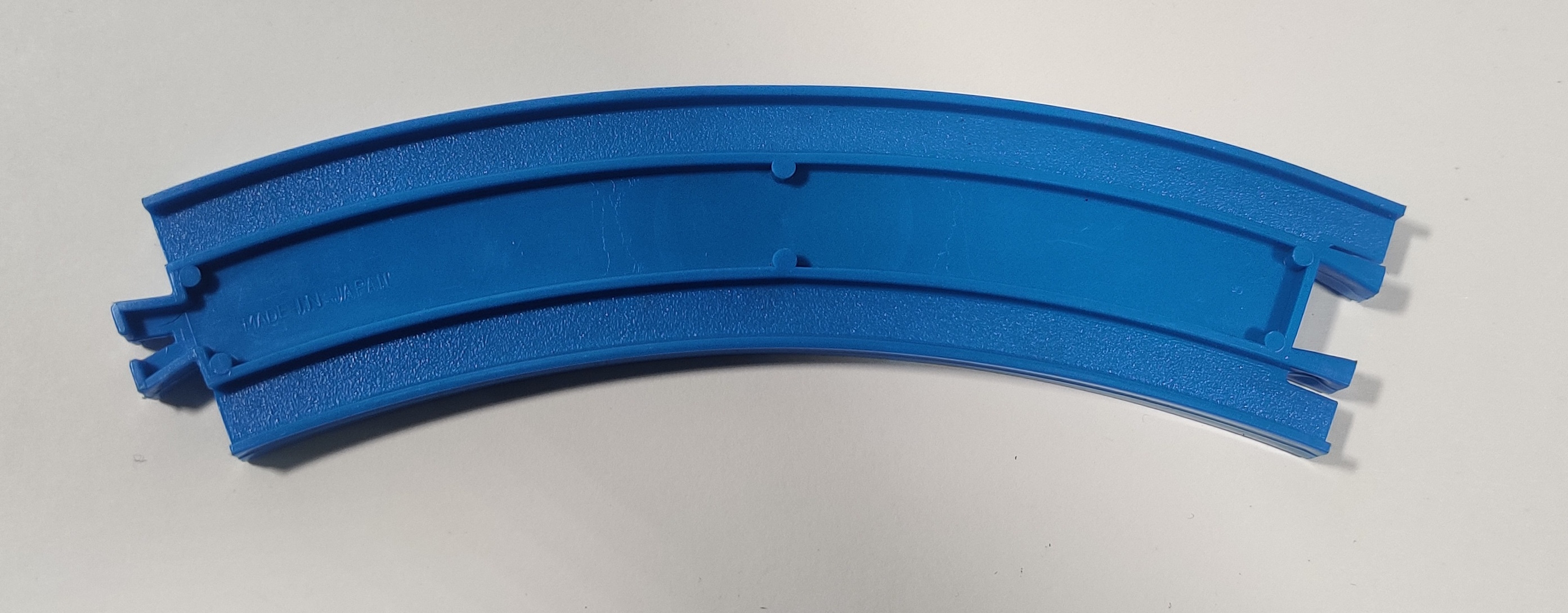
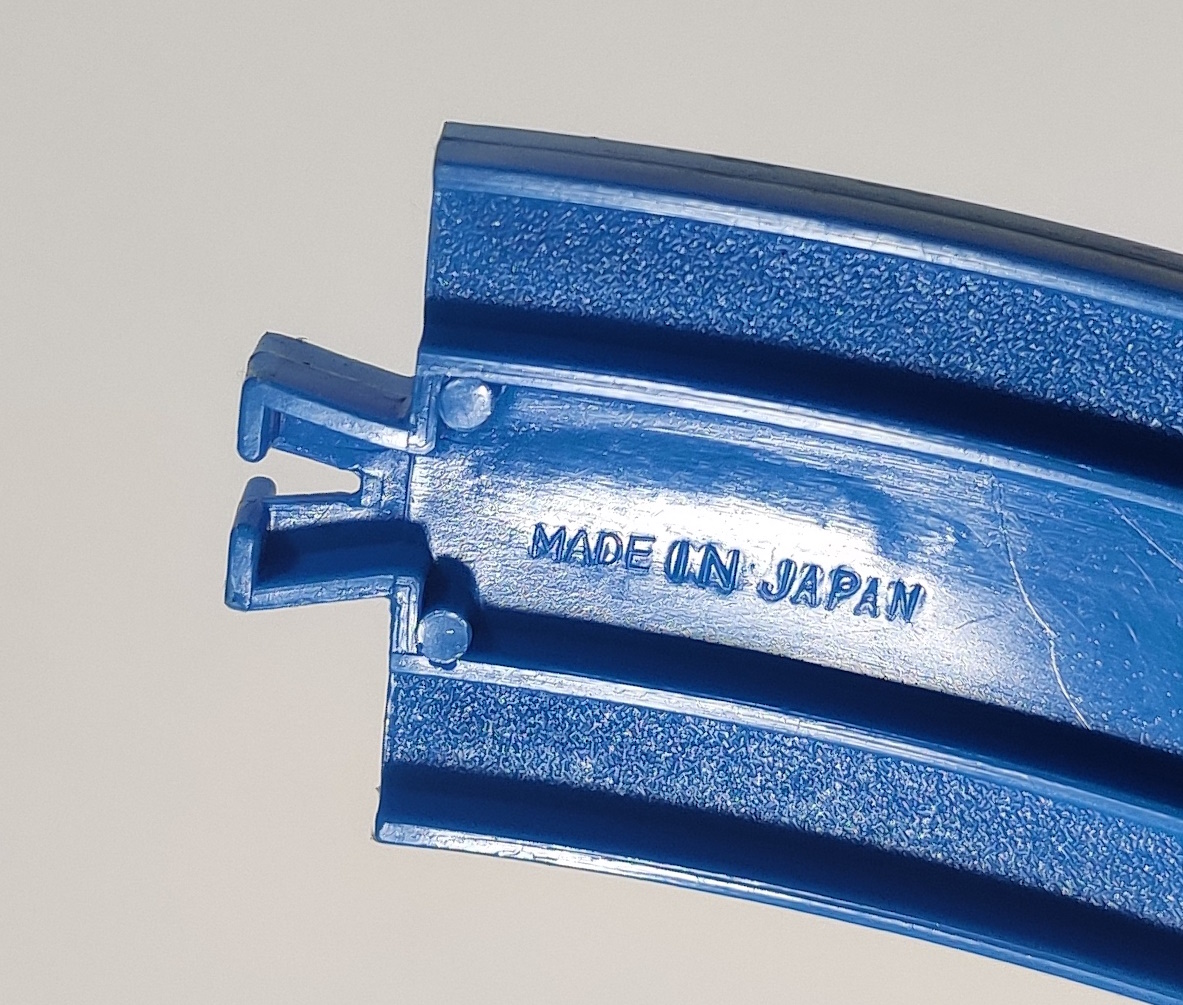
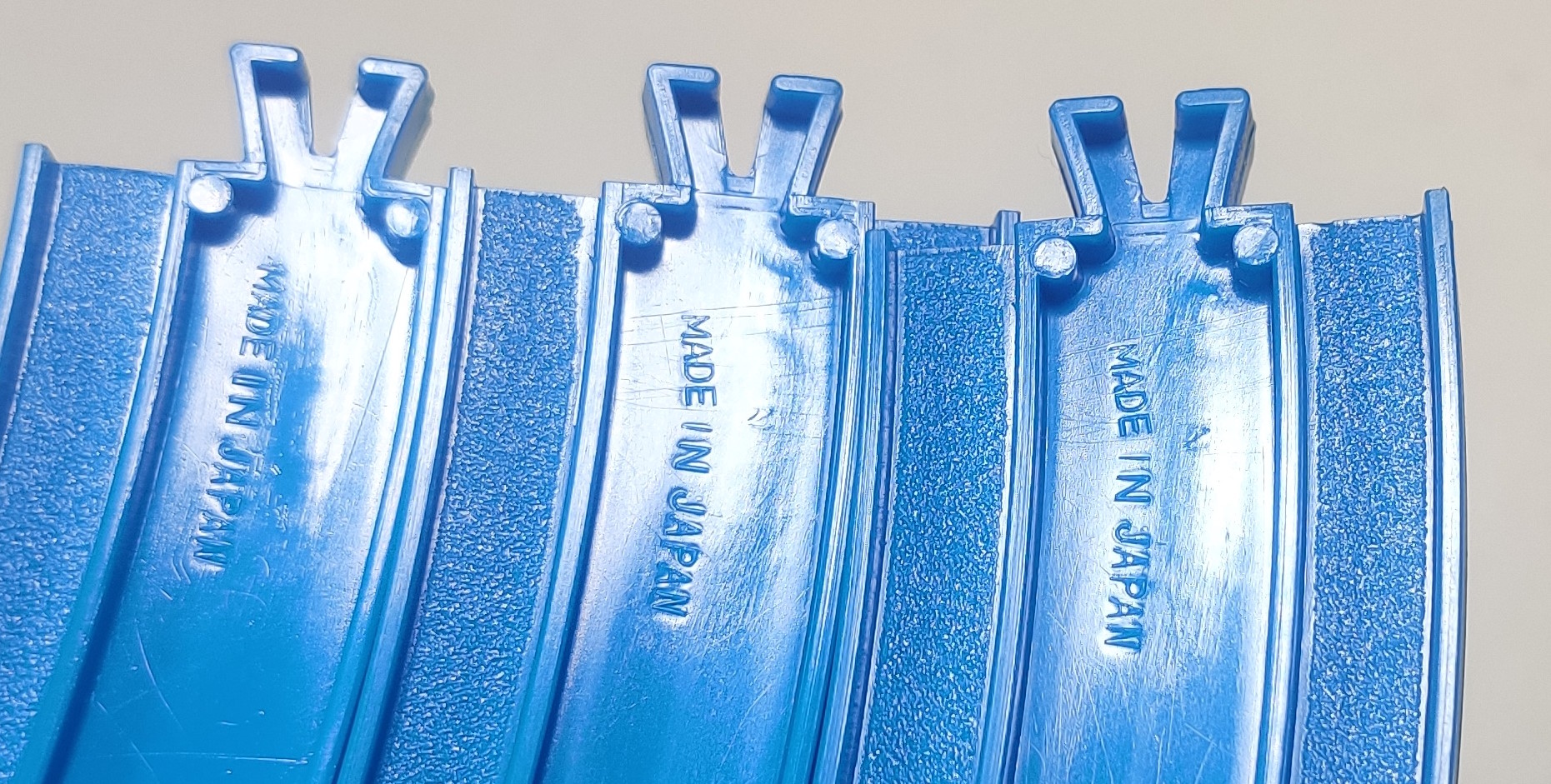
These rails circa 1977 have a "rough" made in Japan stamp that is somewhat uneven with a ring around the pip. A small molding number is located near the input connector and the bottom of the rails have rounded support protrusions. Like many other old rails, these rails can shrink and split over time. The split in the outboard connector is more of a "V" in this iteration as the older rectangular split transitioned to a rounded one. It seems like there used to be a molding slot letter near where the Made in Japan text resides, with some inconsistencies in the surface of the mold as well as a partially visible "N" or similar letter left in the "10" marked rails.
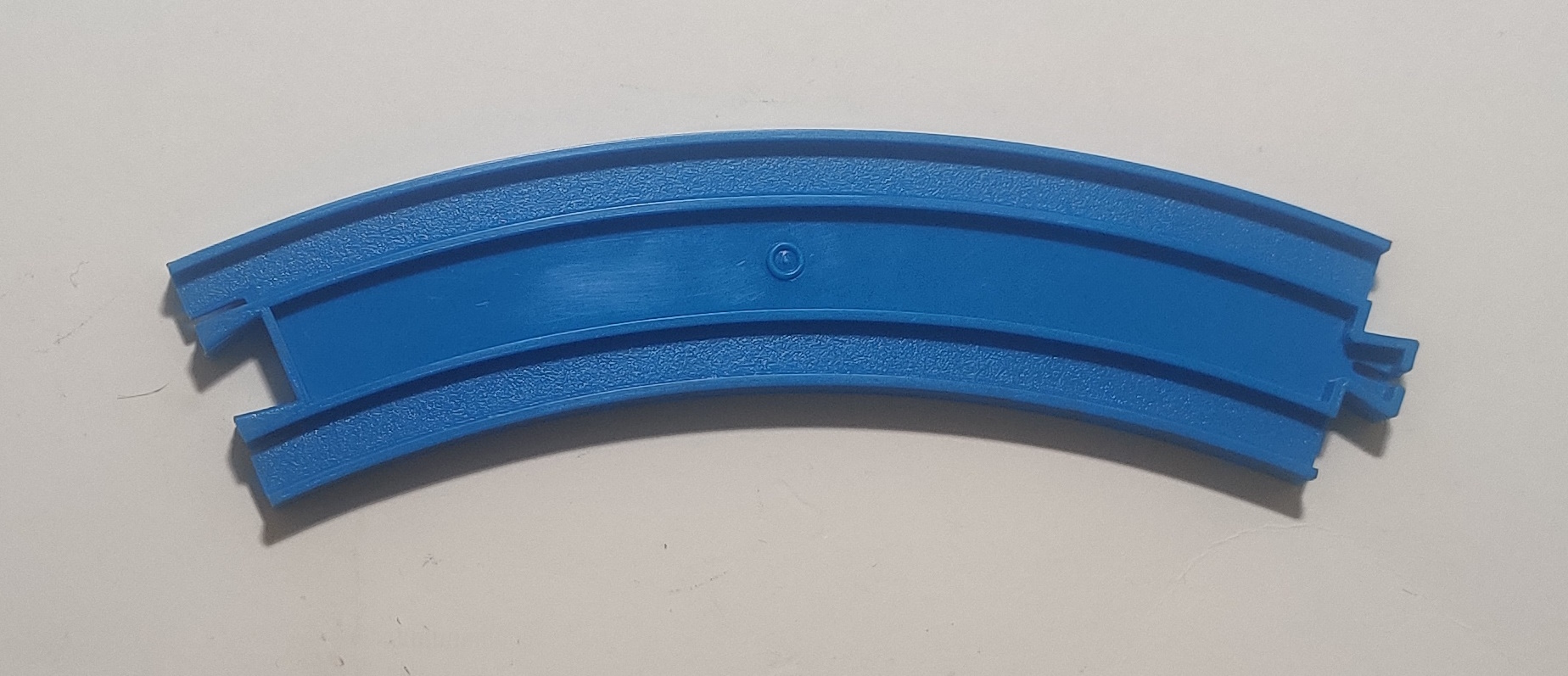
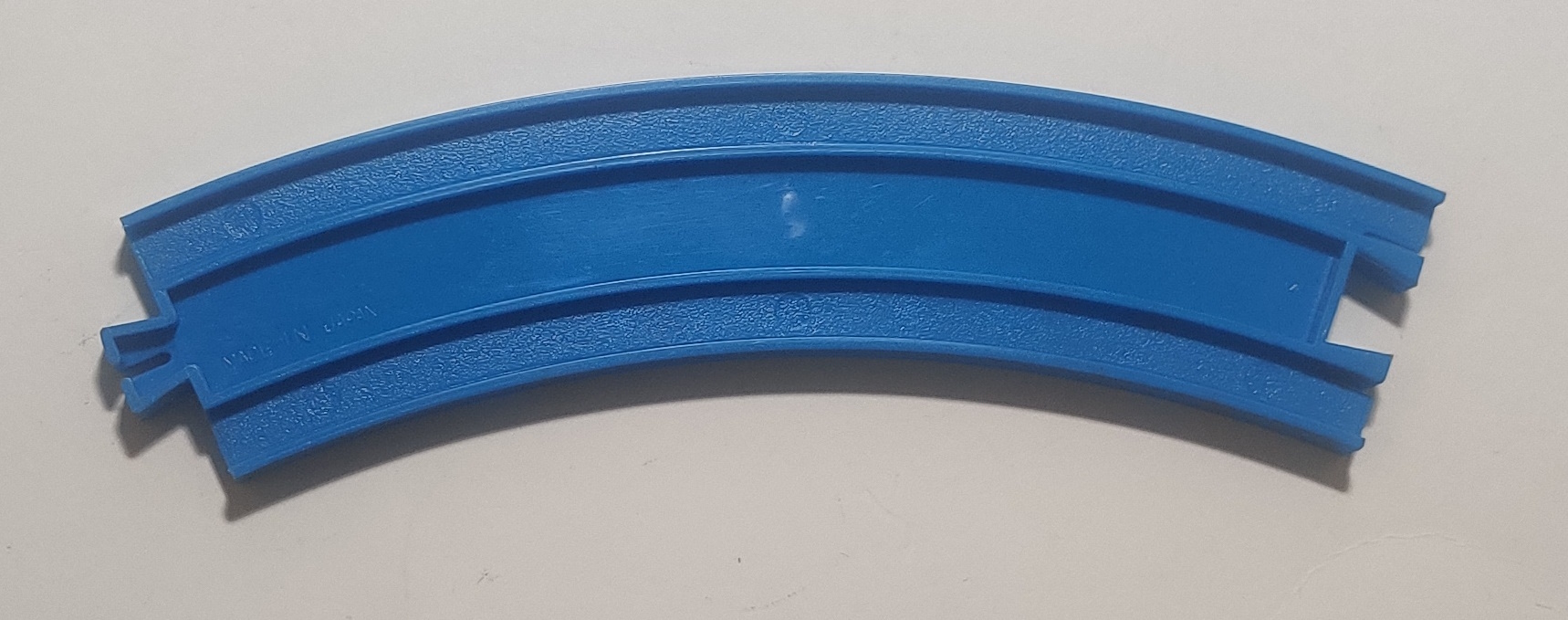
This rail circa 1982 has the rounded out split in the outboard connector. This change seems to have occurred perhaps later in 1977, as this rounded-out tooling appears in examples of the Merry-Go-Train Set.
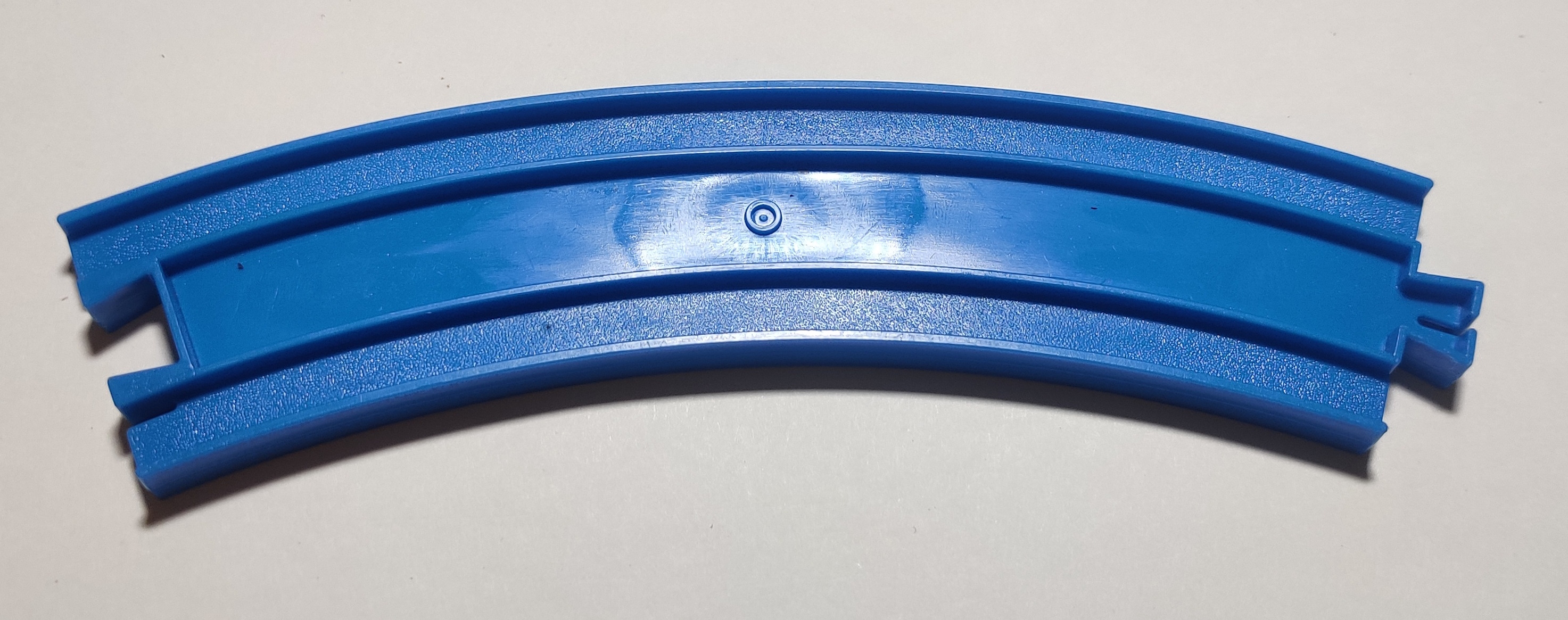
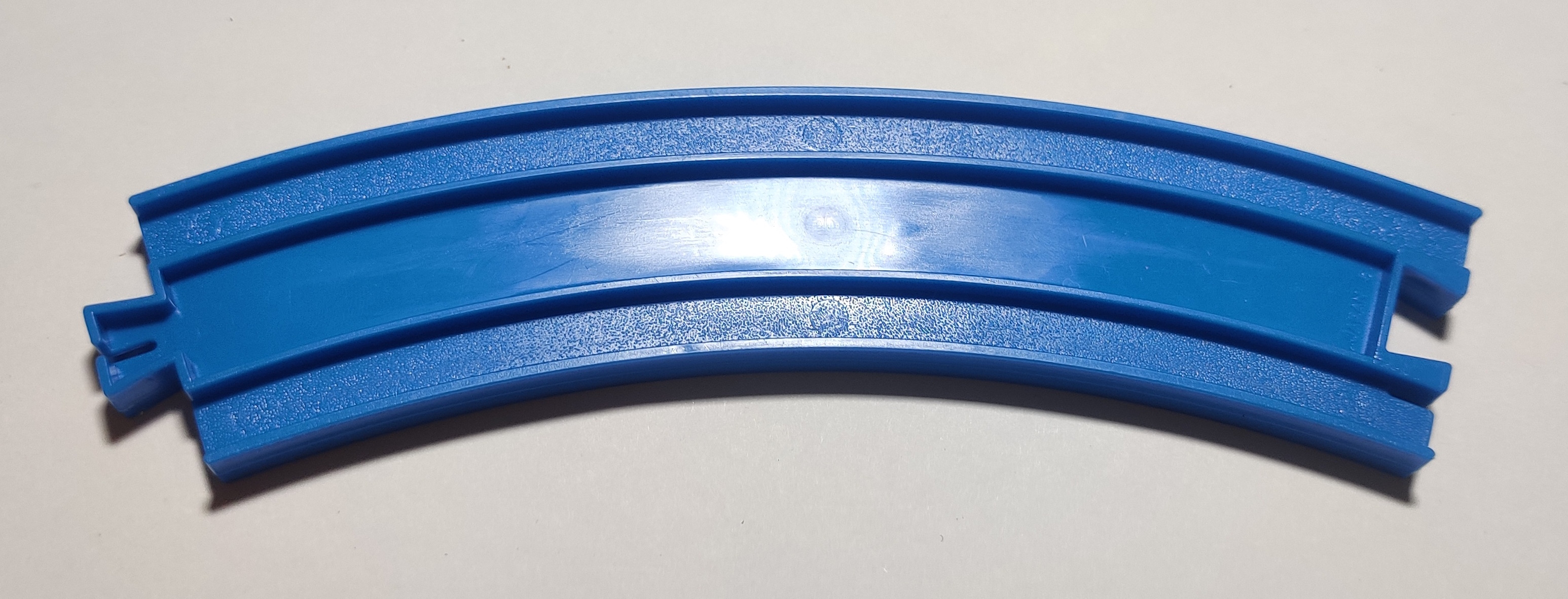
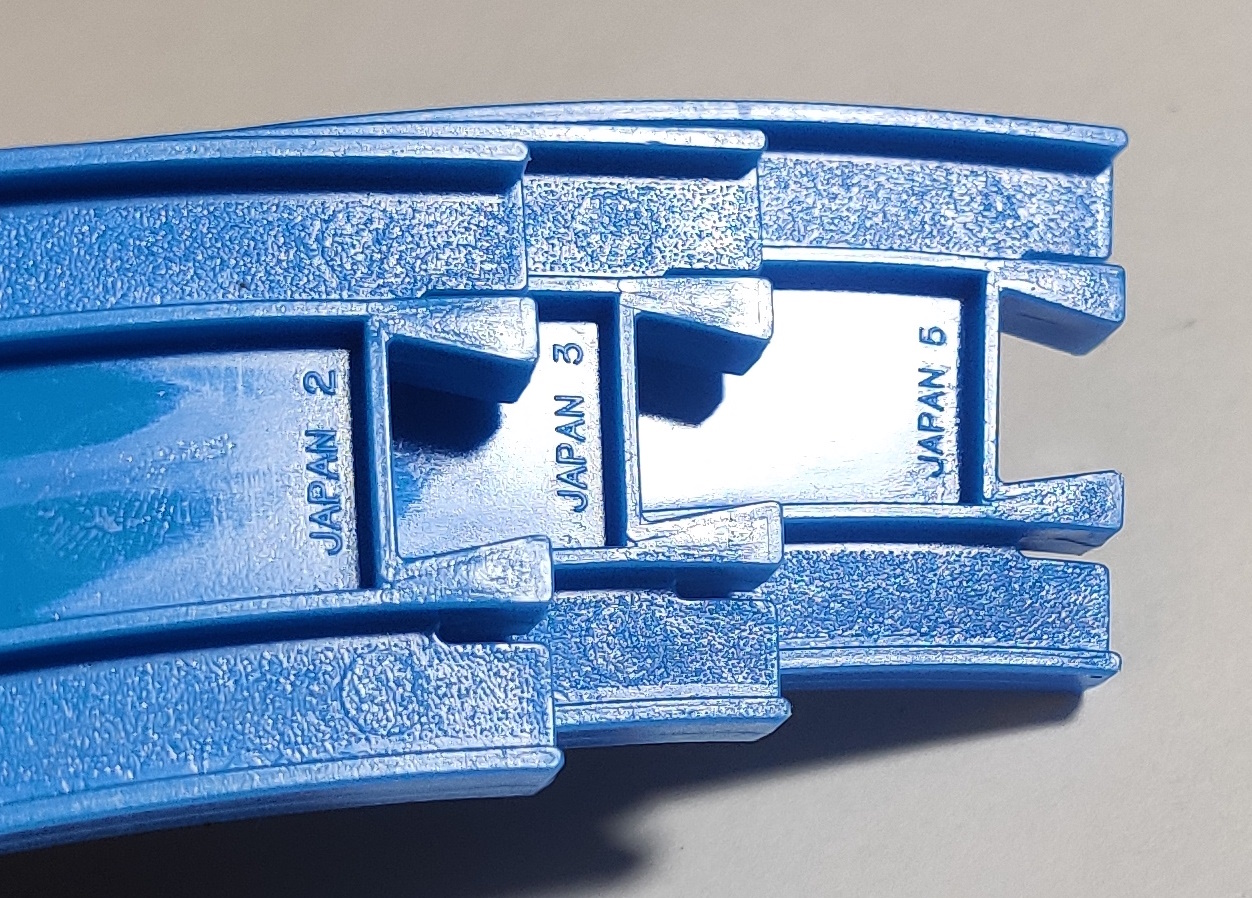
By 1987 the rails had a more refined "JAPAN" mark as well as molding numbers
Transitional rails (1987-1992)
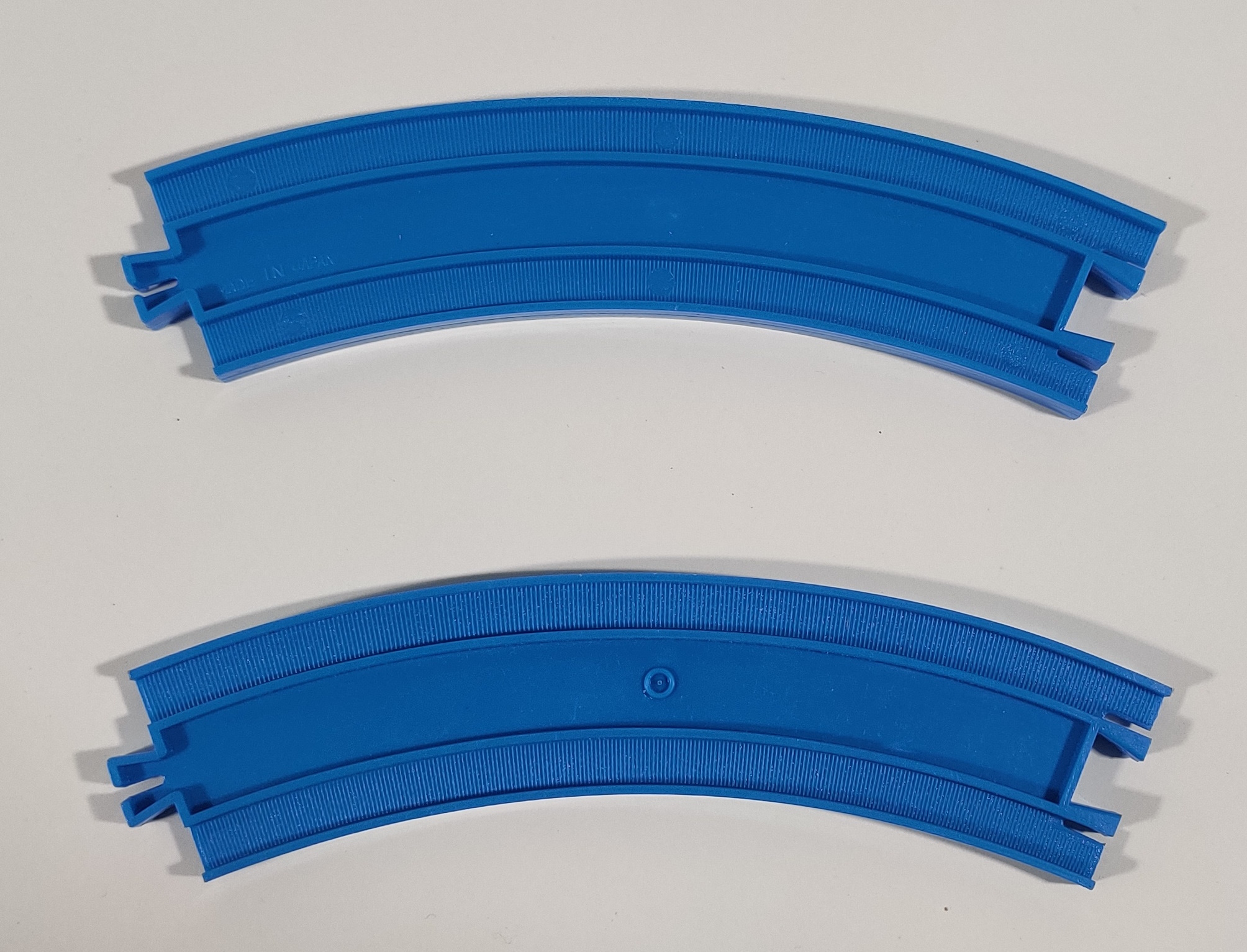
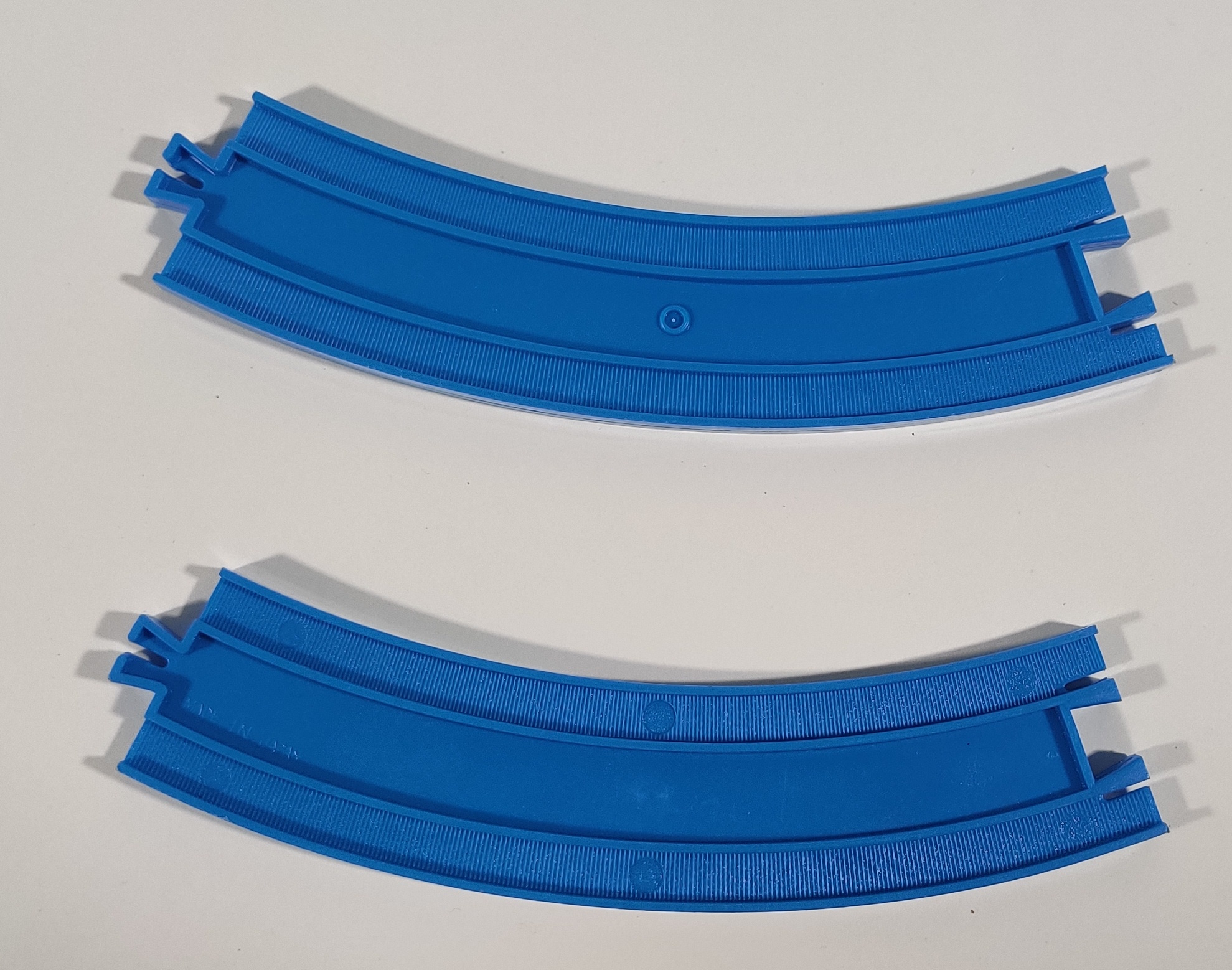
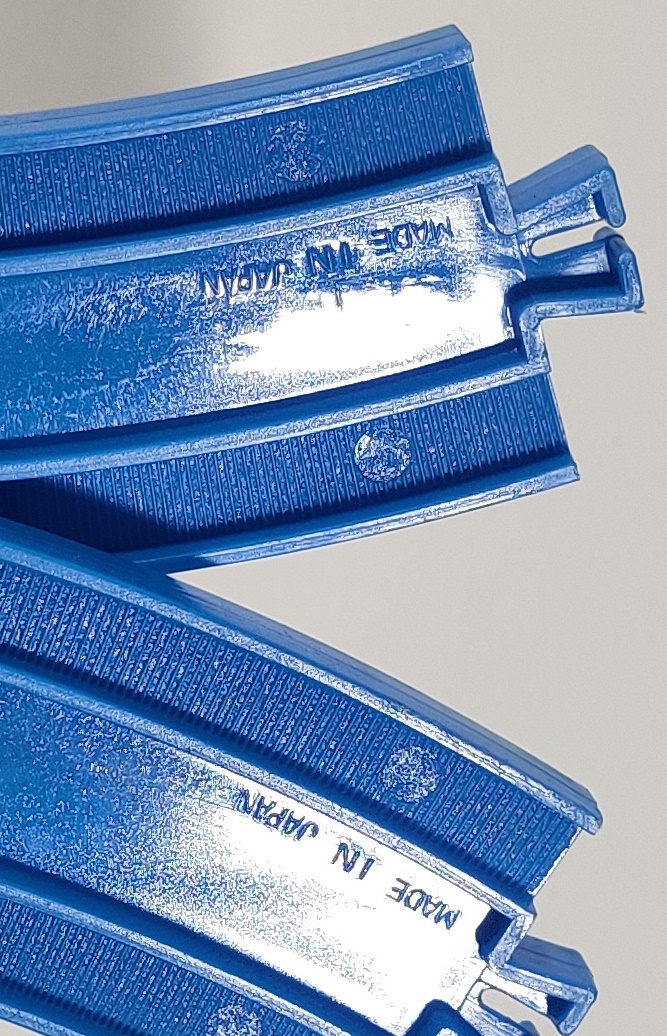
In later 1987 the curved rail mold was updated with the new treaded surface over the existing roughtop molding. This molding has new made in Japan text and exists in both orientations of top and bottom and was used until the new 1992 rail toolings for Japan-produced rails. It seems to be based on the earlier 80s mold.
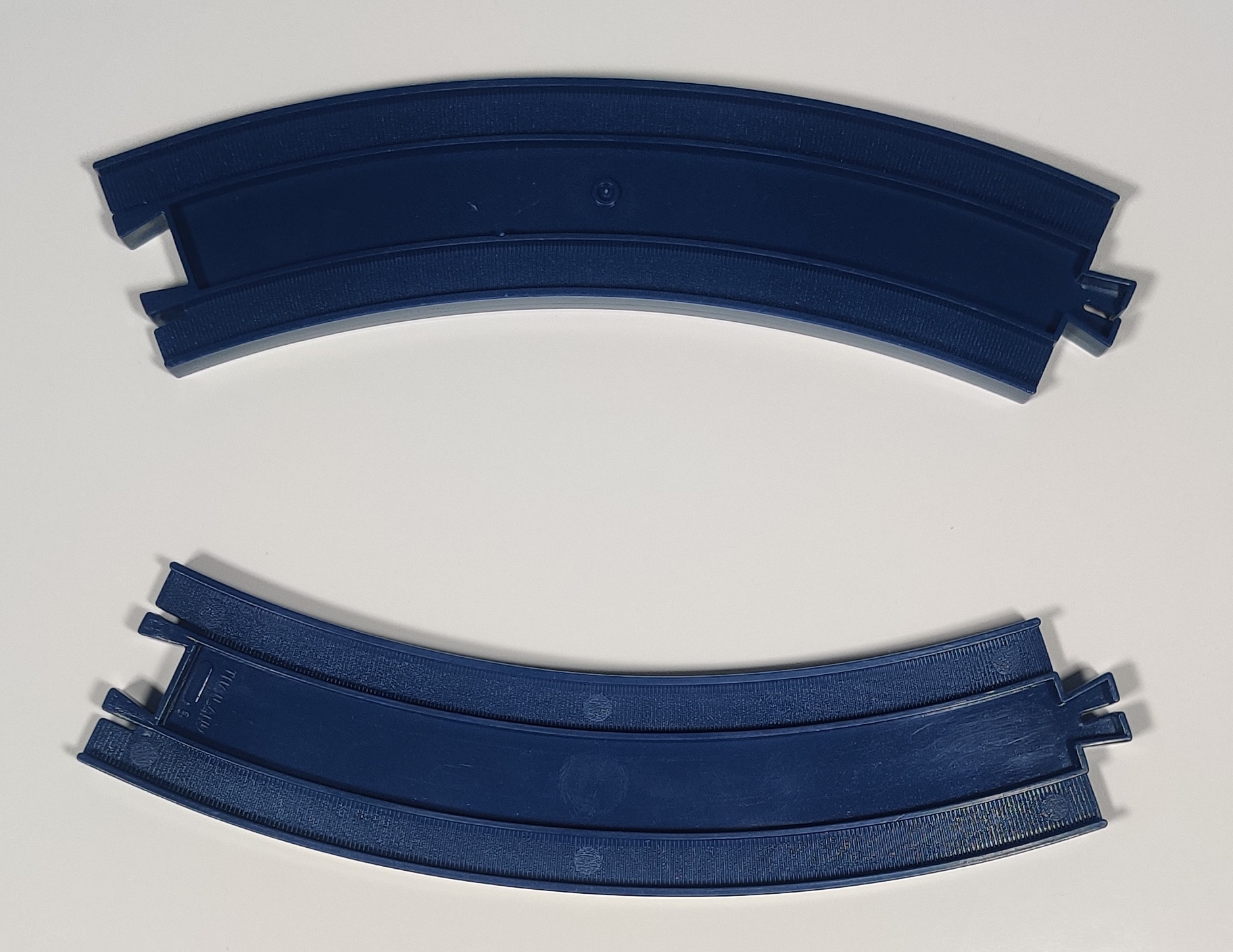
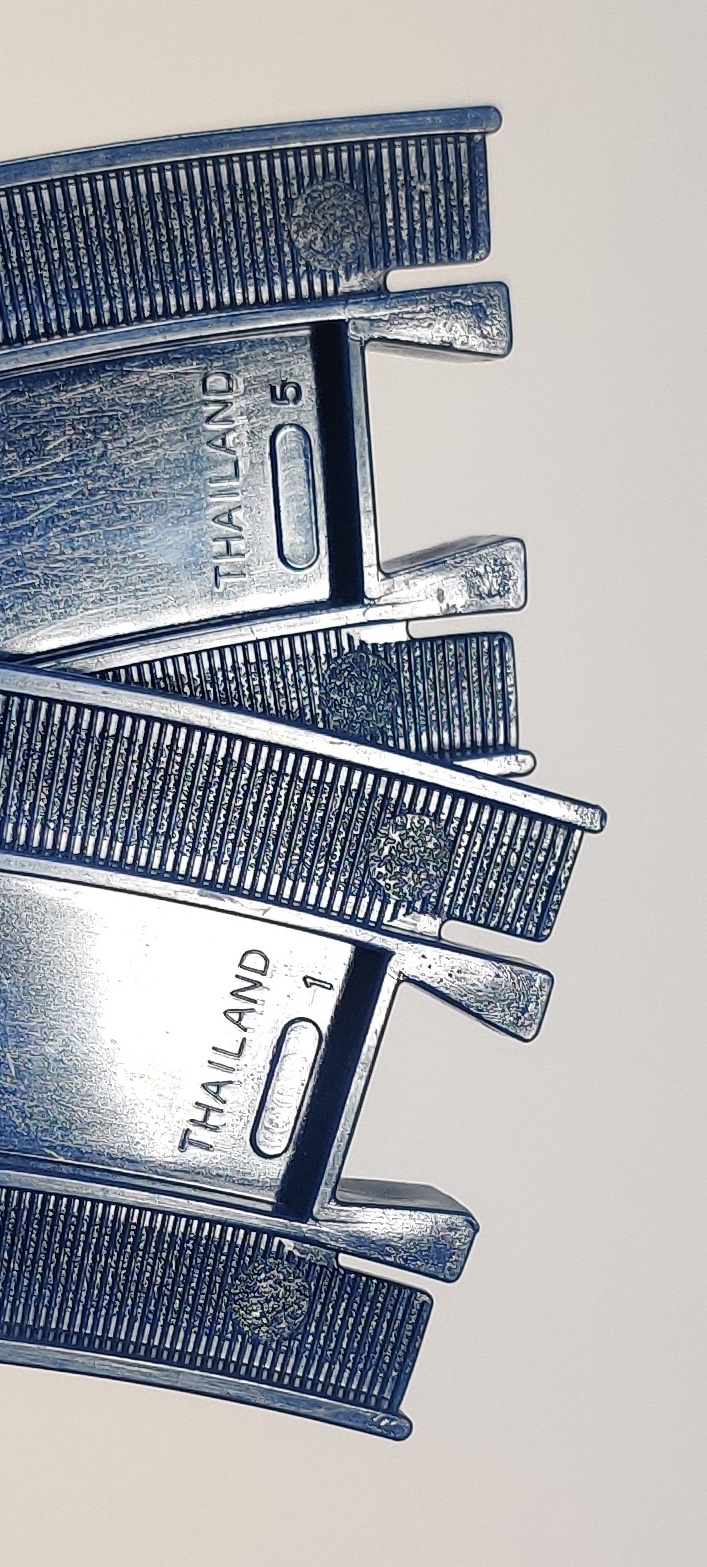
Around 1988 the previous tooling marked JAPAN near the concave connector was sent to Tomy's new Thailand facility that opened in 1987 and updated with tread over the roughtop surface. This rail was used early on in Tomy Train production.
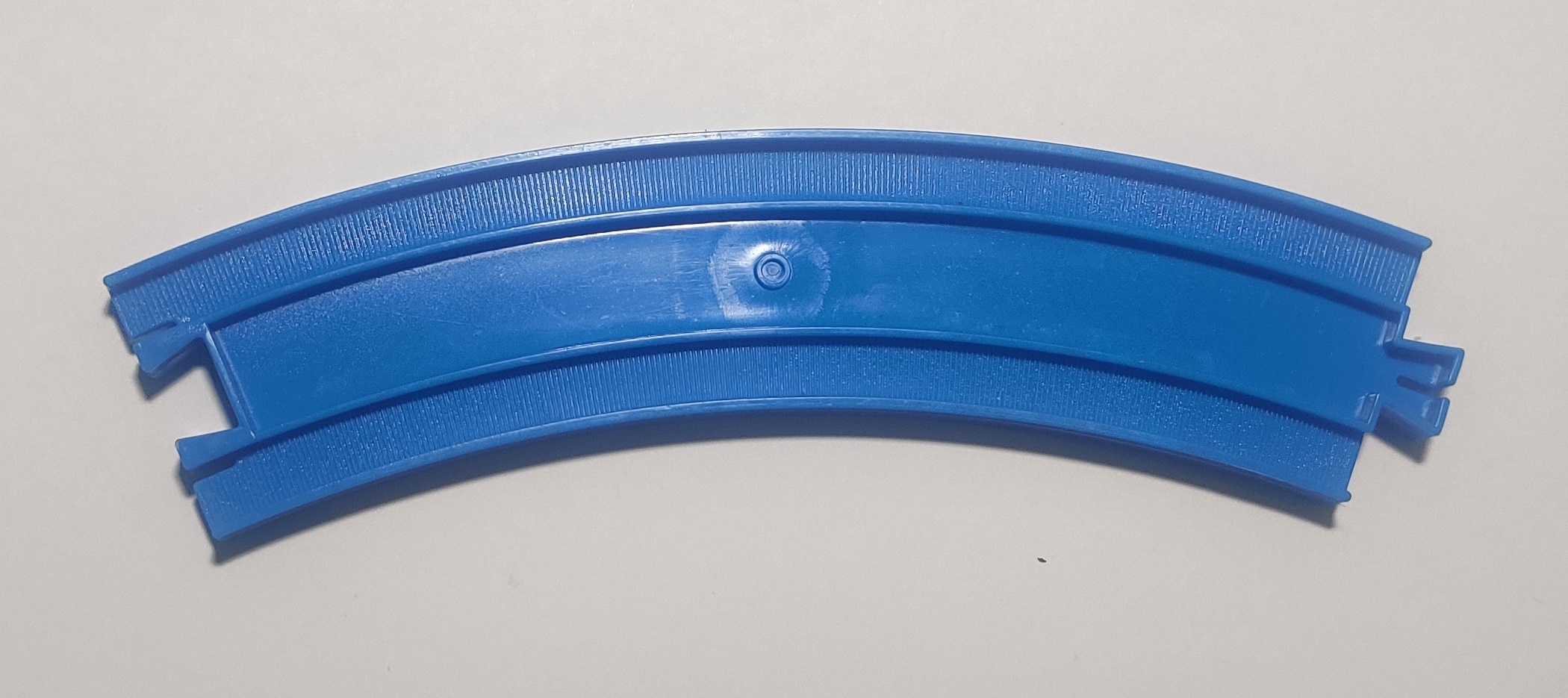
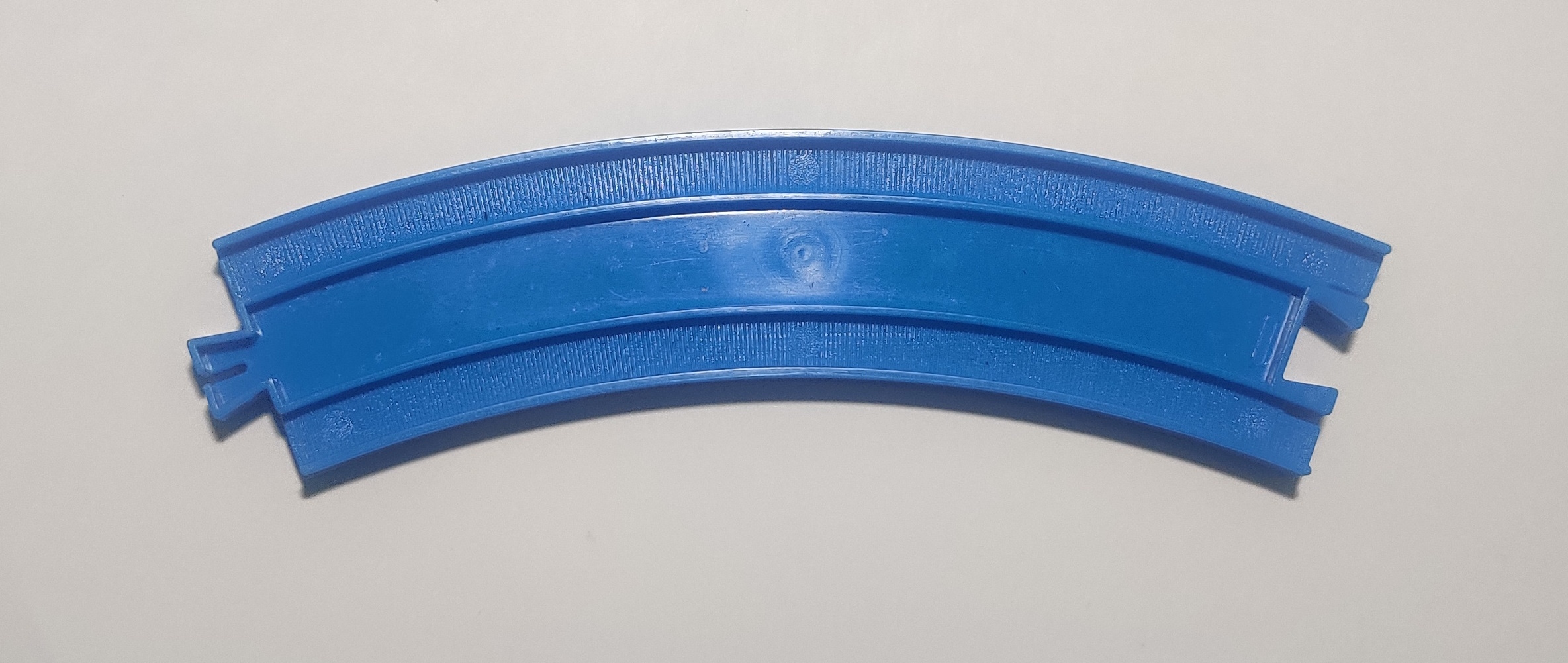
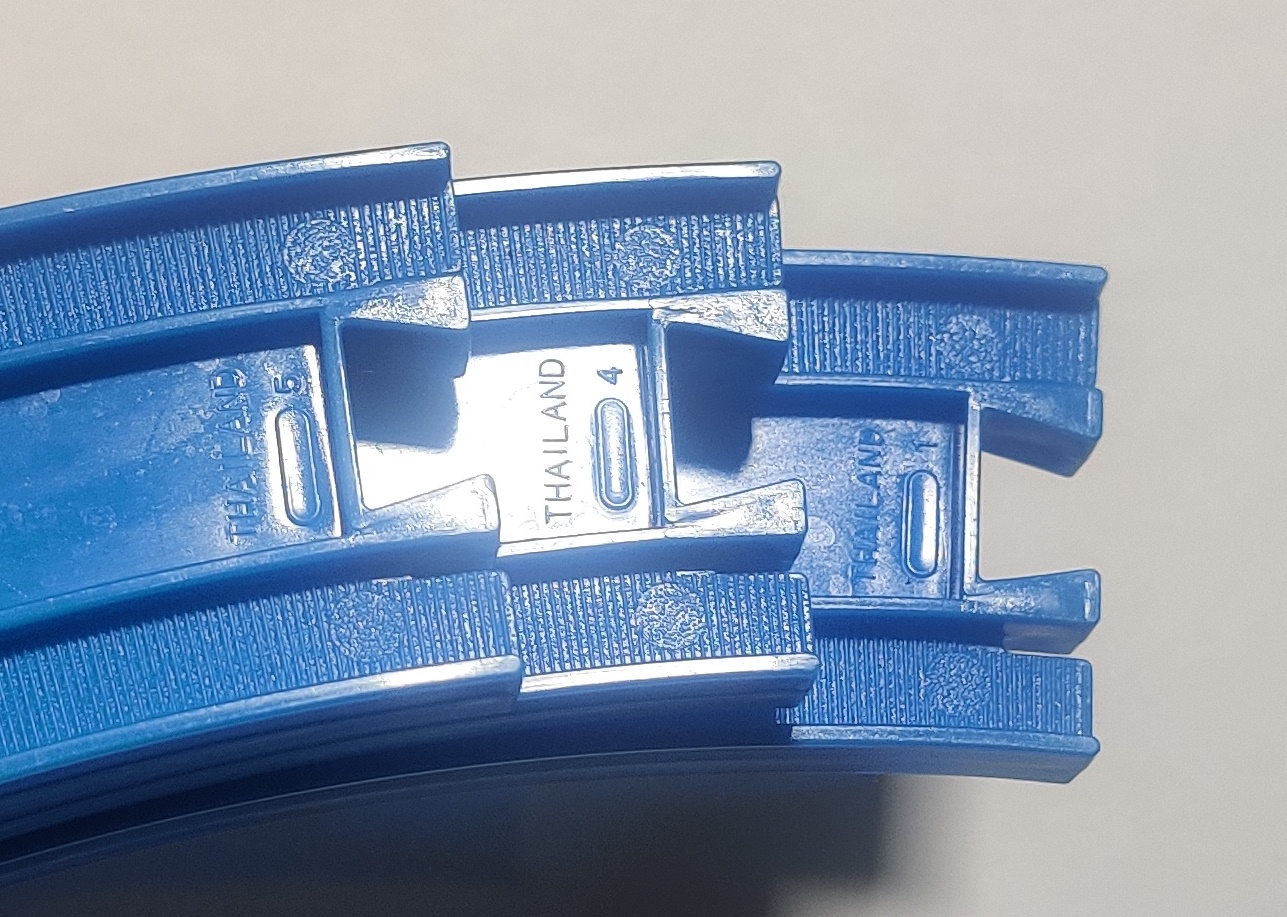
Around 1990 this updated set of toolings was also used to produce regular light blue Plarail in Thailand. Note how the molding marks match those of the late roughtop curve rails from early 1987 shown above with an ovular marking over where the mold previously said JAPAN.
Treaded rails (1989-)
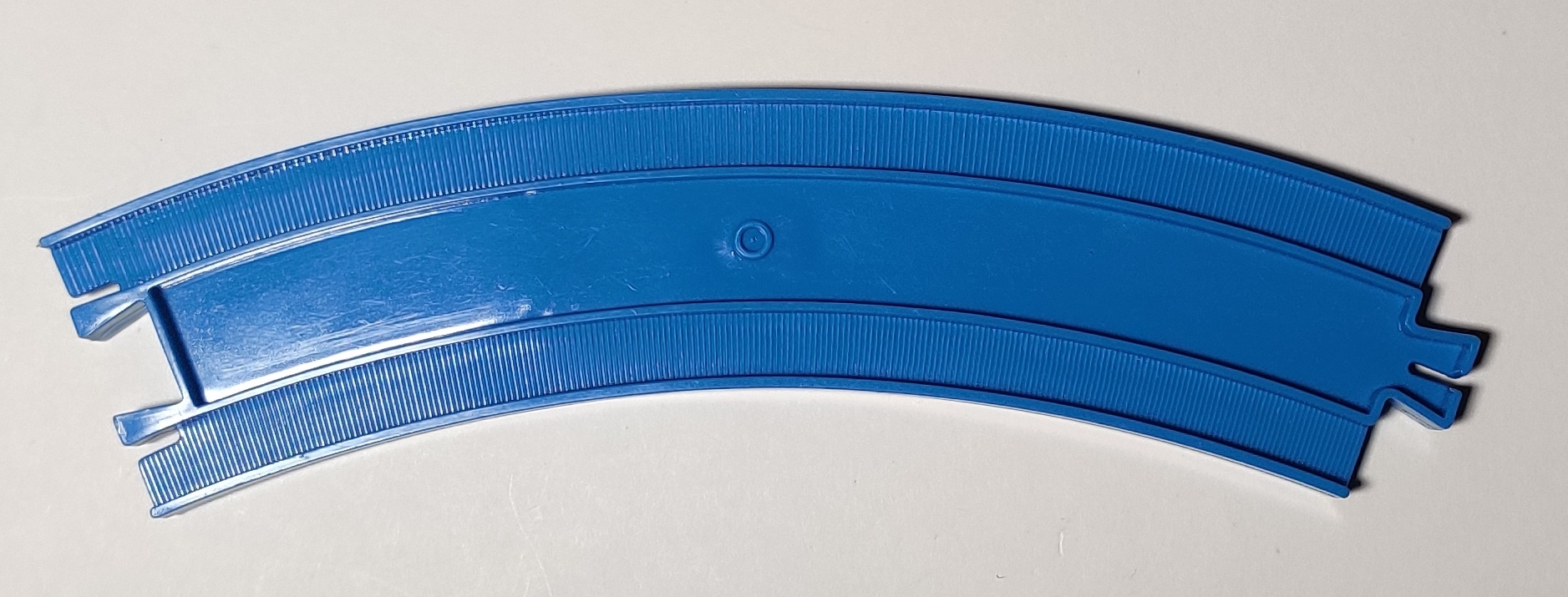
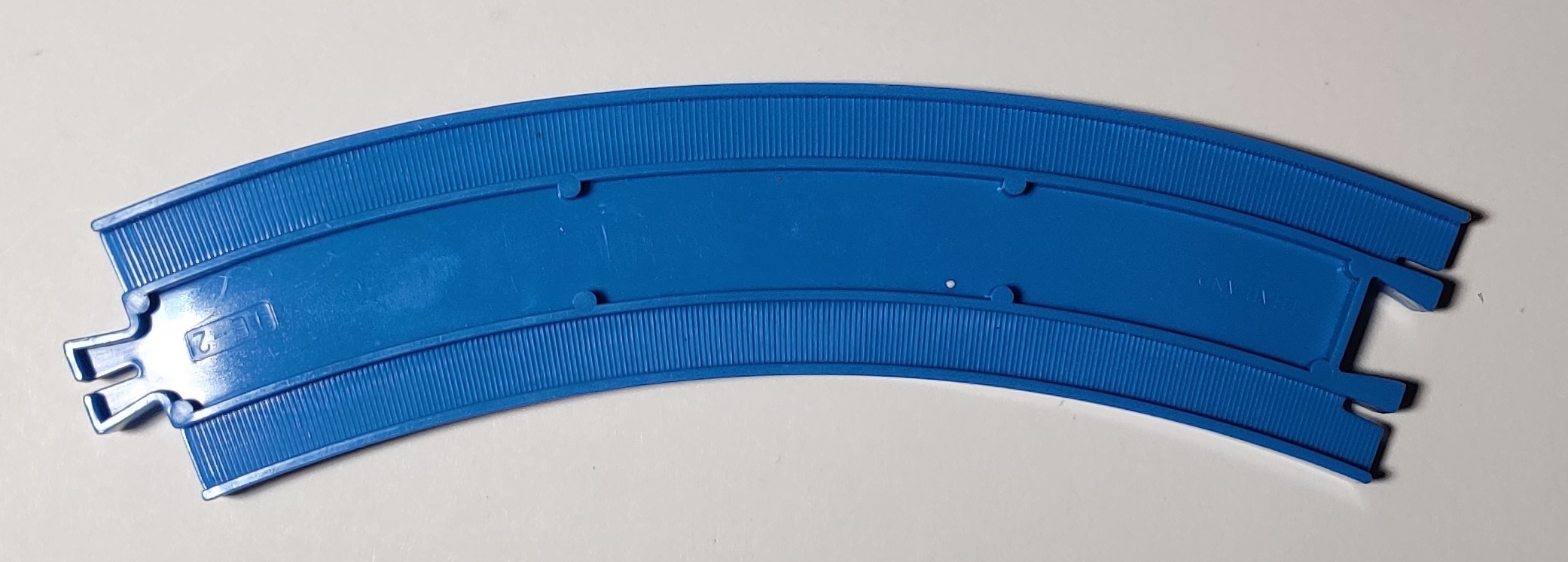
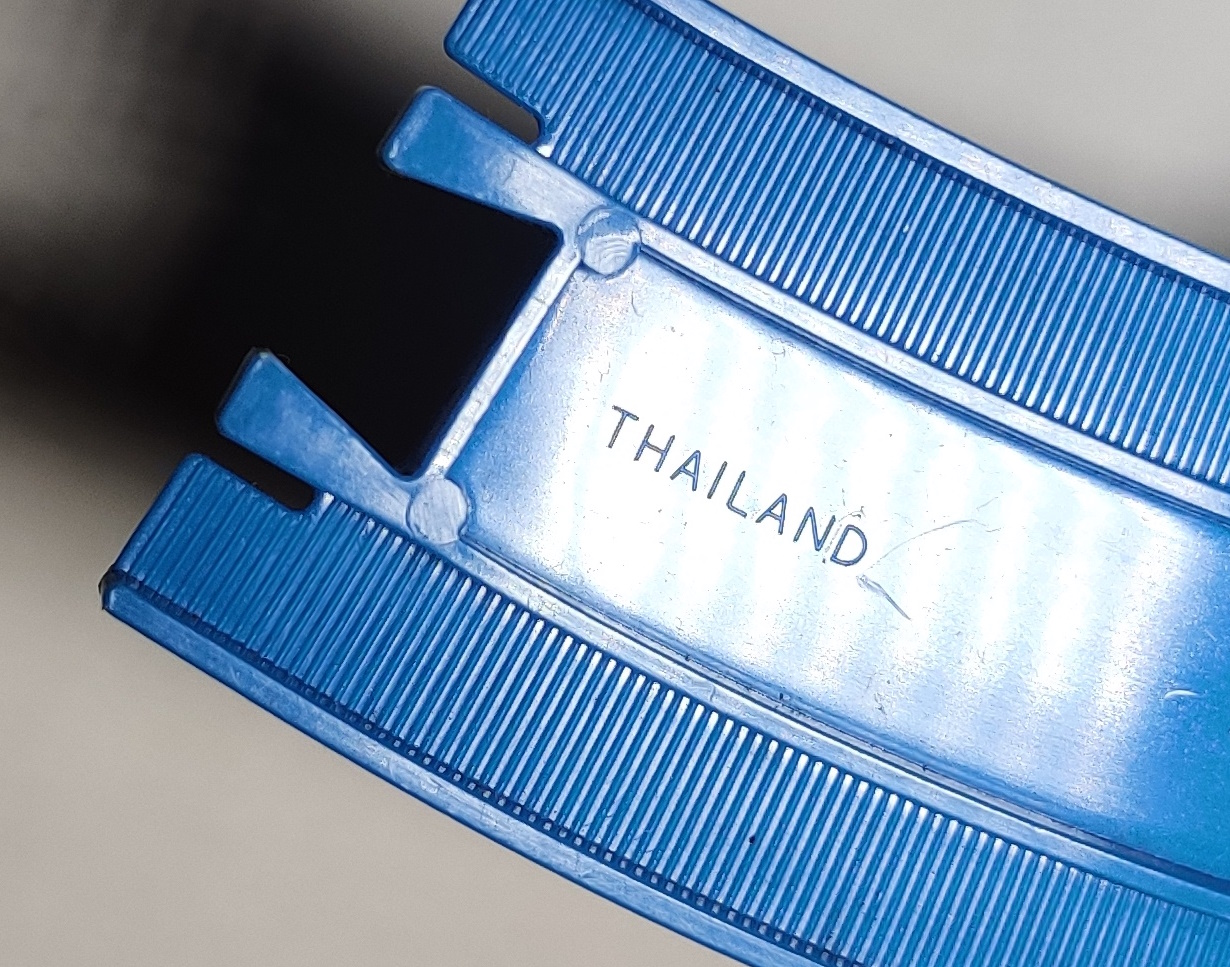
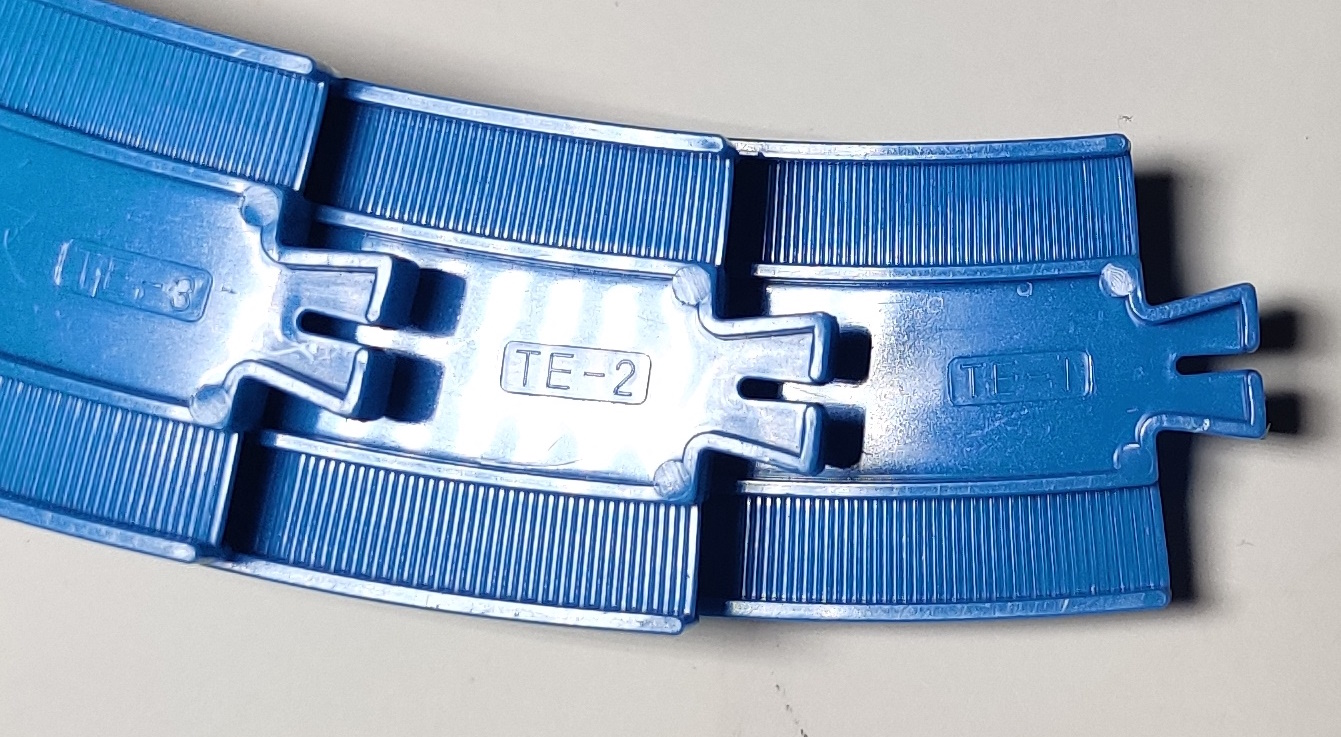
Around 1989 when regular Plarail began to be produced in Thailand a fresh curve rail tooling was made. These early Thailand rails from 1989 have nice large Thailand and mold identification markings and eight round supports underneath.
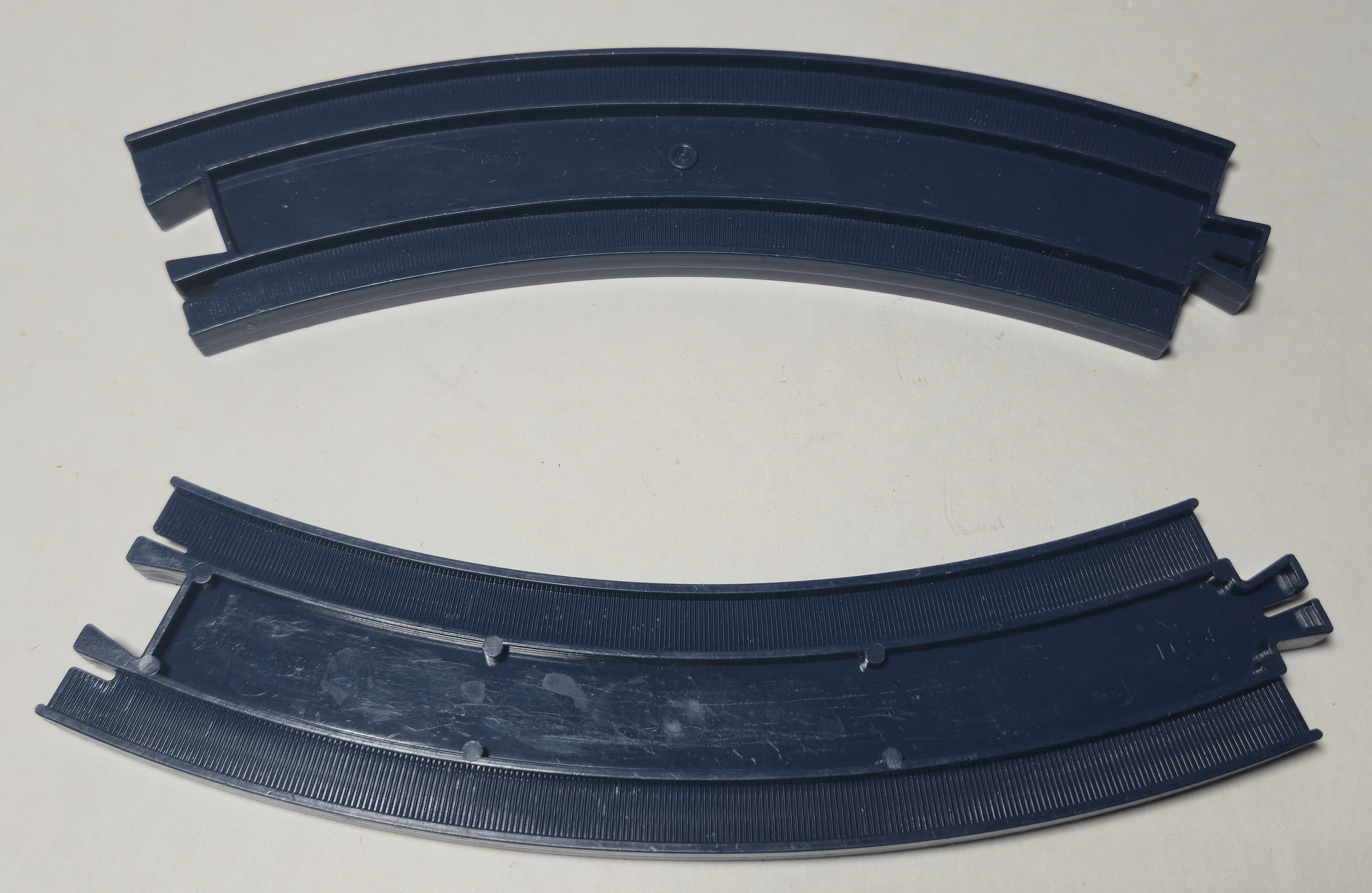
This tooling was also used for dark blue rails for the Tomy Train and Tomy Express series of export train sets.
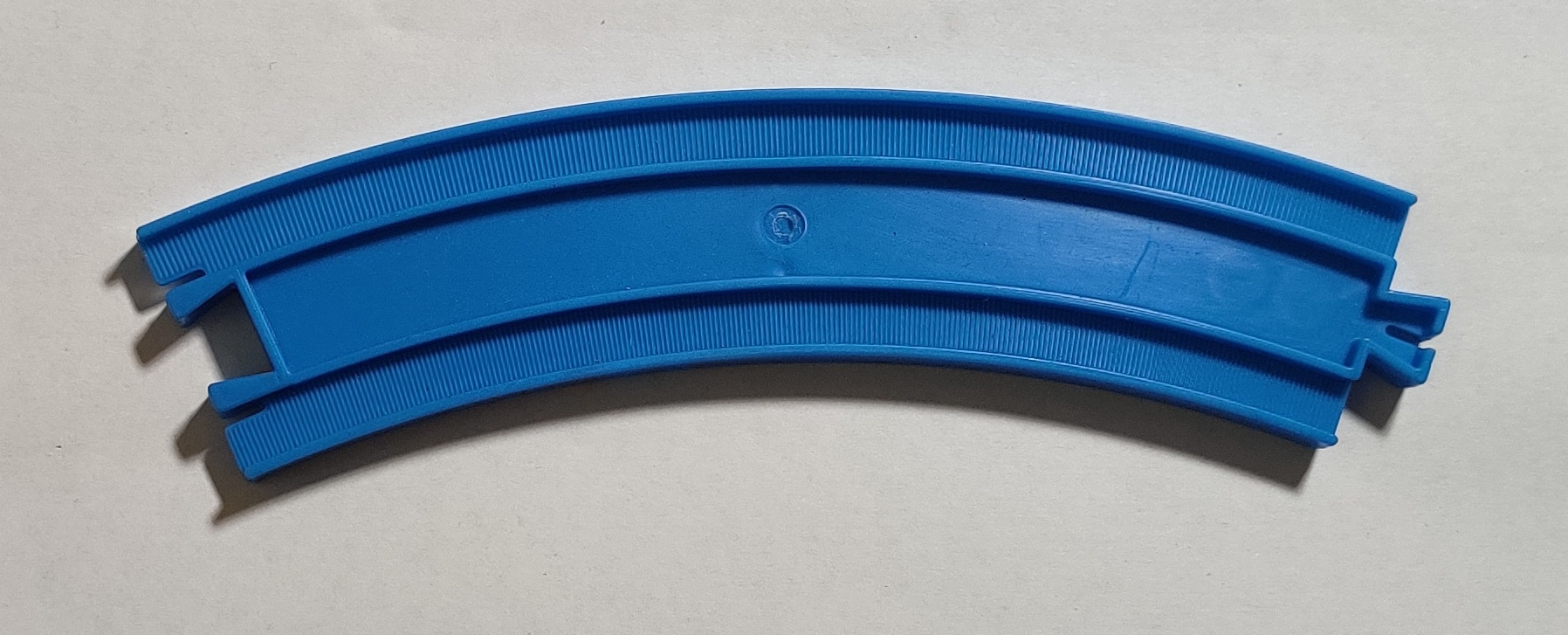
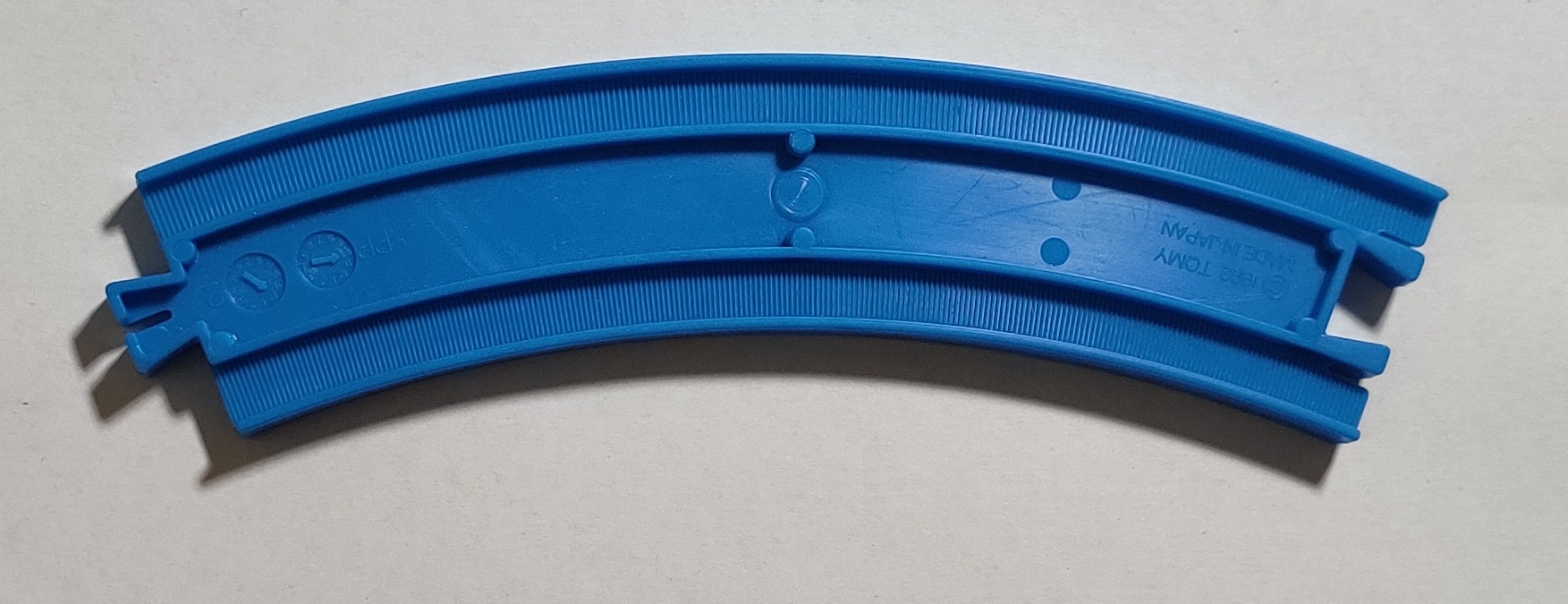
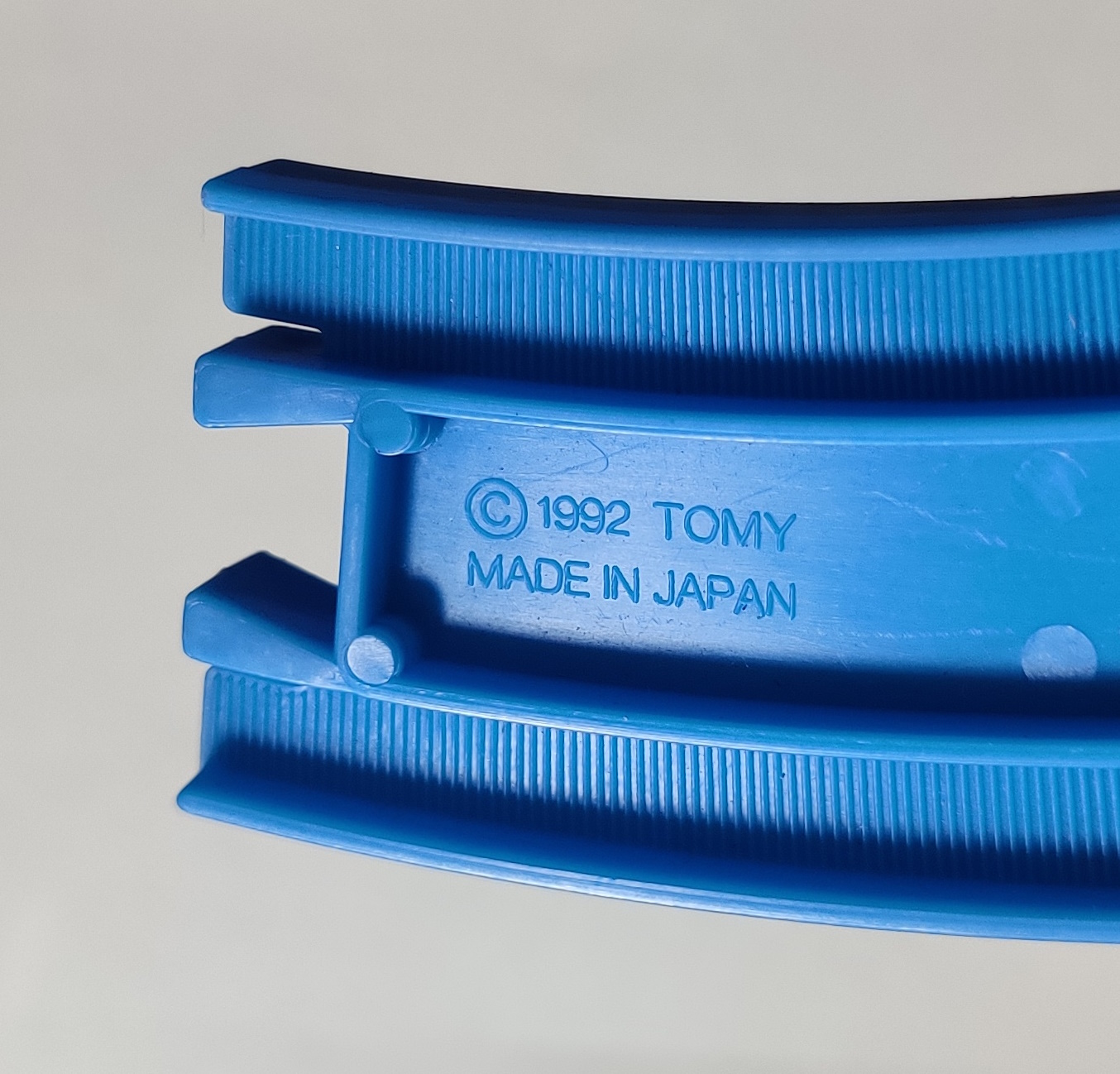
In 1992 some fresh molds were developed for use in Japan with the treaded surface and bear the text © 1992 TOMY MADE IN JAPAN. This mold has rougher center pips with six cylindrical supports and molding dial markings in the bottom of the rails.
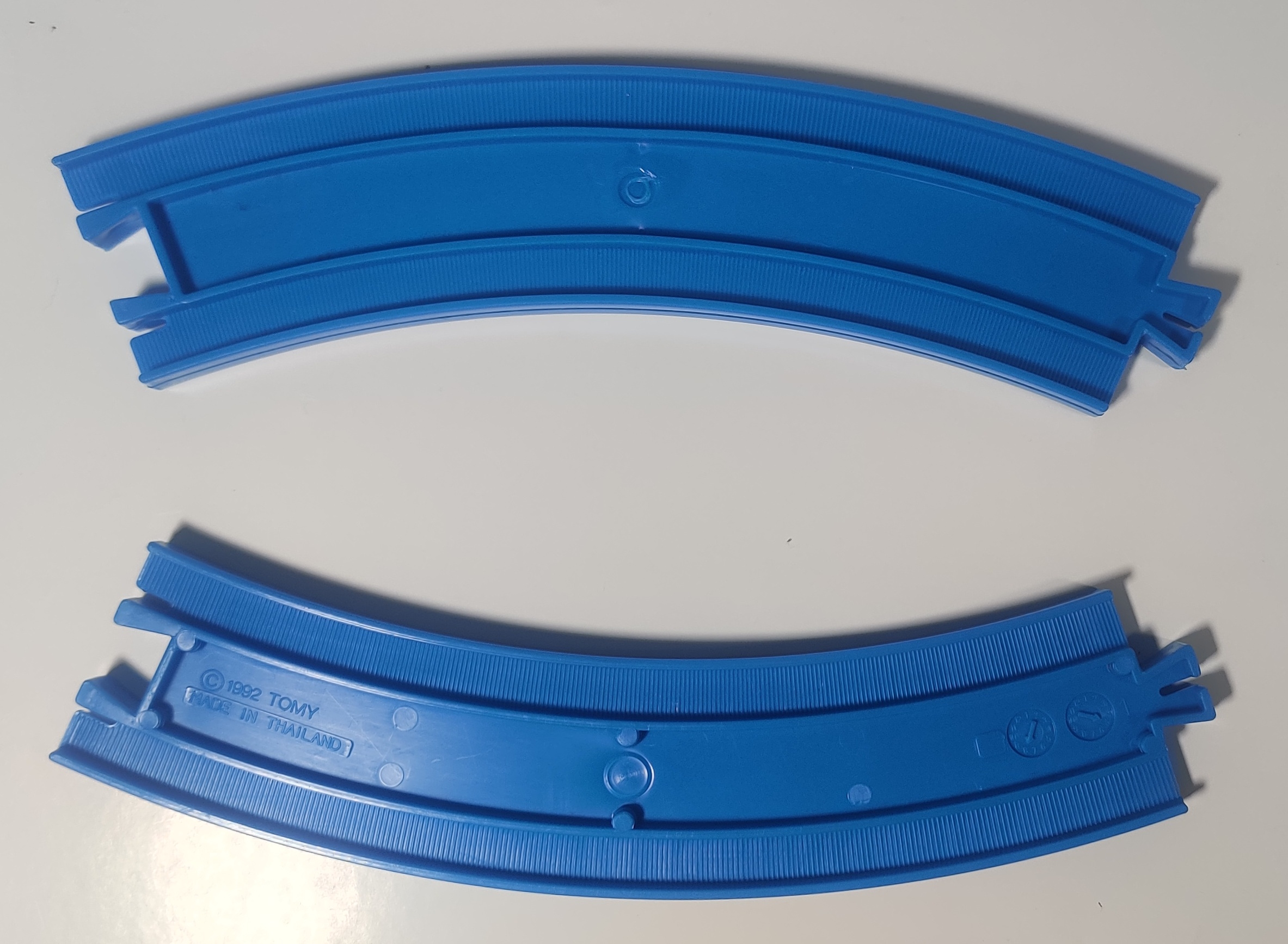
In the later 1990s this Japan tooling was moved to Thailand and updated to say as such.
7481 Curve Rail (Tomica World) (1998)
In 1998 as part of the Tomica World system packs of four curve rails were sold individually as well as included in sets for the American and European markets. Early Tomica World curves are the Thailand tooling update of the 1992 Japan molds seen above.
| <-- R-02 Half Straight Rail |
R-04 Large Curve
Rail --> R-04 Double Track Straight Rail --> |